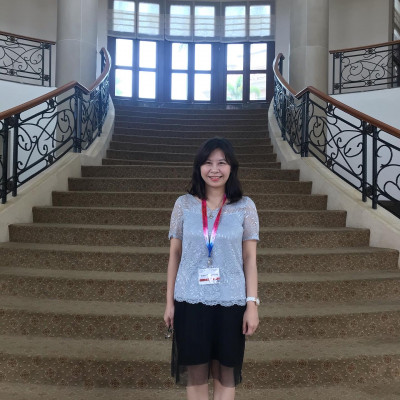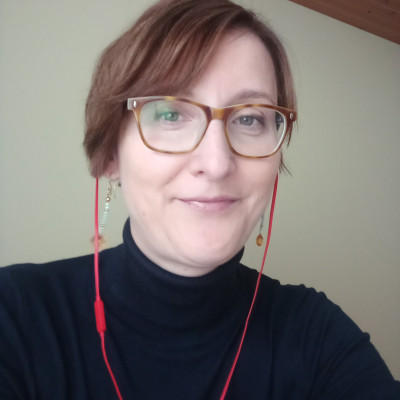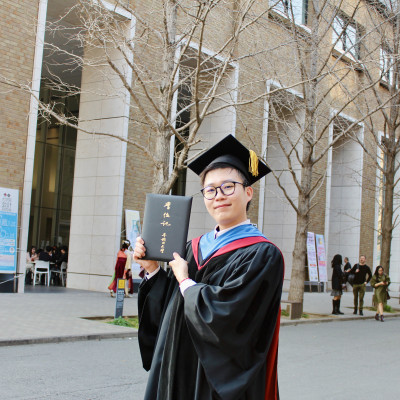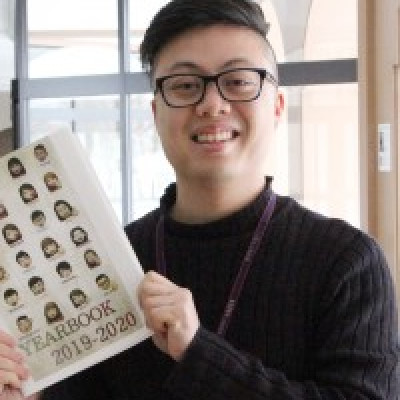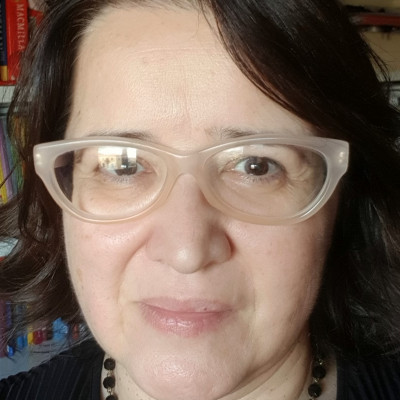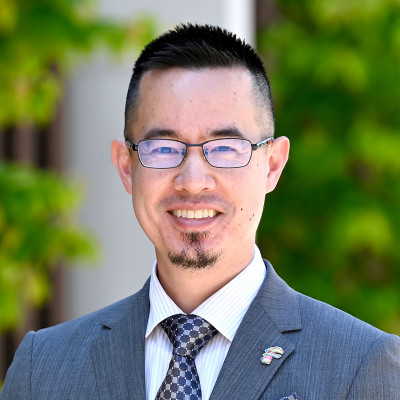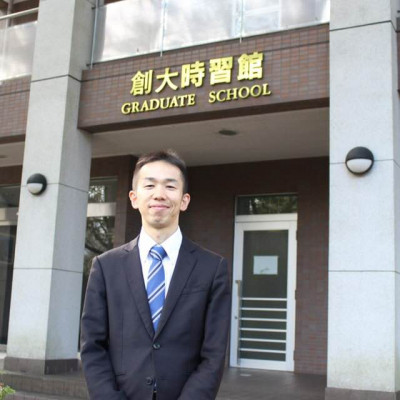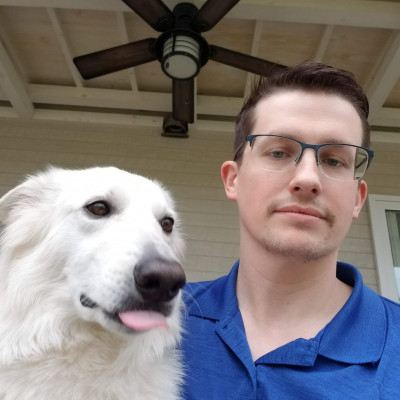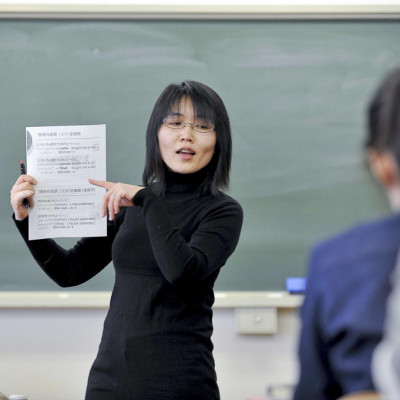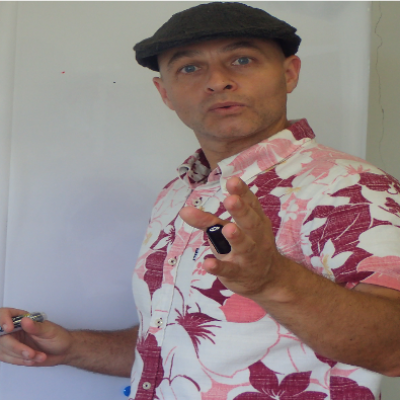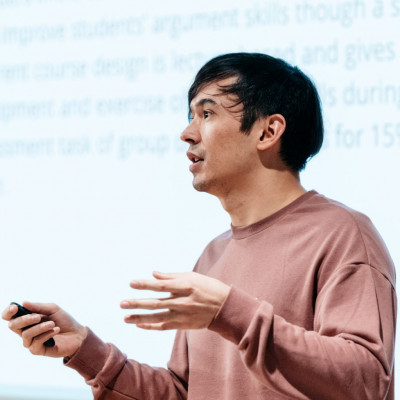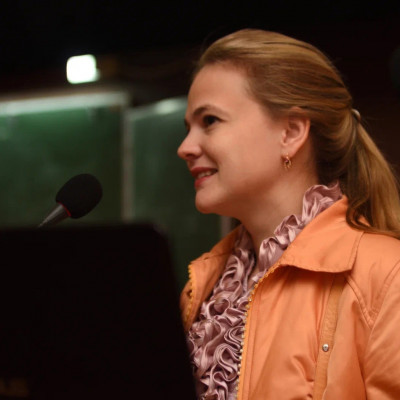Schedule Go Compact (displays all)
You can use Quick Lookup to quickly find sessions. But best is to use the LIVE SCHEDULE during the conference itself.
Welcome Lounge #3258
Join James, Fred (Co-chairs), Gary (Web), Steve (Hosting) and the rest of the team as JALTCALL2022 gets underway. If you have any last second questions or just want to say hello, please pop in.
Playful coding tasks: computational thinking makes its way to the language classroom #3092
Computational thinking and coding have become part of the educational curriculum in many schools. But what about learning to code in English? Definitely possible! In this session I will be discussing the difference between computational thinking and coding and their place in the language classroom, in line with problem-based methodologies. The session will continue with basic concepts that can be introduced with young learners (8 year-olds onwards), and practical examples of playful and game-like tasks that learners can carry out using the free online coding programme 'Scratch' and the 'Micro:bit' programmable card. The features of these programming options will be shown, and the tasks showcased will be sequenced in order of complexity, according to the coding concepts involved.
The initial tasks on 'Scratch' will include animating text and characters, in order to create simple visuals and then stories, and coding simple games and musical sequences. As the learners gradually acquire coding skills, the next set of tasks will be using the Micro:bit card to code objects for application projects, like a dice, a sound warning, a poll and a moisture sensor. As we showcase each task, we will dive into the code itself as much as possible.
By the end of the session, participants will have become familiar with coding options that can easily be used in the classroom, ways of making coding relevant for language learning, and meaningful task ideas and samples of students’ work.
New Ways to Teach Listening Online #2925
With classes now switching between online environments and face-to-face settings, teachers need a variety of activities that work in both situations. This presentation will show how to create interactive listening activities that can be used as paper and digital activities and can be used online or in class. Attendees will get a hands on approach on how to create their own activities and also access 100s of free audio materials online. Attendees can also learn how to adapt materials to fit their teaching needs. The presentation will focus on using Google Slides, Google Forms, and Microsoft PowerPoint for creating engaging listening tasks and puzzles that can work on a variety of listening skills. Teachers will also learn how to create task templates that make creating new activities easy and efficient. Some emphasis will also be given to creating listening activities for mobile devices. Finally, the presentation will give some insight to successful task design, and how to make tasks fun and intuitive.
How do you know if your Ludic Language Pedagogy is “MMM… delicious” or not? Stick some research thermometers in it! Let’s talk about what to use and how to use them. #2950
This workshop will provide you with a variety of research approaches, methodologies and instruments to help you understand the effect that your teaching with games is having on your students and their learning. Together, first, we’ll look at some typical (now stale) game-based language teaching projects and pull out and examine the thermometer(s) that were used. We’ll scowl angrily and “tut-tut” condescendingly at all the vocabulary tests and surveys about motivation or opinions from students and teachers. Next, we’ll gleefully break out the really cool research projects and research thermometers that we will borrow from the Ludic Language Pedagogy community kitchen. We’ll all “ooo and aah” at the mounds of shiny stuff: concept maps, gameplay transcriptions, debriefing sequences, stimulated recall protocols, student-created “best play” videos, evidence-driven reflections, textual and media analysis, ethnographic gameplay fieldnotes, transfer tasks, carefully chosen/created tests, open-ended interviews, and whatever else we can grab before the conference. You’ll receive on-the-spot training about how each gadget works (what questions it can answer and how best to use it) and learn how to stick a bunch of these things all over and in your Ludic Language Pedagogy (before, during, after, post) in order to clearly and comfortably get a hi-definition image of what effect your methods, materials and mediation (MMM!) have on your students and their learning. You’ll leave the talk/workshop with as many thermometers as you can cram into your inventory, and be ready to go back to your classroom. You will be able to use these tools to evaluate how well your own LLP is cooking and to make minor tweaks to it (iterate! try your recipe again!) the next time around (ala “good teaching” or action research) and you’ll be able to use the information and skills to more formally research your teaching and submit your projects to conferences and journals interested in teaching with games (*cough* https://llpjournal.org/ *cough*).
Using Twine in the Foreign Language Classroom #3028
This workshop will explore potential uses of Twine, an open-source platform for creating non-linear stories, in the foreign language classroom. Non-linear storytelling and interactive fiction can help teachers to create a playful and immersive learning environment, which allows learners to gain the same benefits as reading traditional narratives, but with added agency over the direction of the story and interaction with the narrative. These additional elements have been shown to increase the motivation of students to read, and can be used to facilitate discussion, critical thinking, and decision making that is not easily accommodated through the passive reading of traditional narratives. Learning how to create non-linear stories with a platform such as Twine can therefore provide educationalists with a new, easy to use, and effective tool to create immersive exercises for their classes.
Participants in this workshop will gain a basic knowledge of Twine, its limitations, the possibilities it offers, and some of its potential uses in the classroom. They will be guided through the basics of creating non-stories with Twine and will start to create their own simple non-linear story using the platform. Following completion of the workshop participants will have acquired the skills to begin developing new resources for their own classes with Twine and the knowledge to guide students through the use of the platform.
Participants do not require a knowledge of Twine or its markup language (Harlowe) since the workshop is aimed at those with little to no knowledge of the platform and limited knowledge of digital methodologies and paedologies more generally. Those wishing to attend will need access to a computer during the workshop and should have either downloaded Twine beforehand (https://twinery.org/) or be able to access the online version during the workshop.
Real Time Transcription & Translation for Class Instruction and Lecture: A Workshop #3055
Transcription and translation: two tools that help foster a more inclusive classroom experience for different types of learners but more importantly create a more effective and engaging classroom environment. The presenter discusses he setups, maintains and conducts an English language class using speech-to-text technology and real-time translation in both online and face-to-face settings. We will also cover the reasoning, strengths & limitations of this technology and have a refresher on speaking best practices. Participants are asked to install PowerPoint and Google Translate, have a Bluetooth or regular microphone ready as they will be trying it themselves.
Spielend Lernen Spielend Lehren: Games in TEFL and TEFL teacher education #2948
Developing skills in a foreign language can be a very serious matter. Language skills can be essential in gaining or maintaining employment, in being able to access information from a wide range of sources, in building relationships around the globe, and in being able to share one’s own experiences and opinions with a wider audience. But all work and no play does not necessarily achieve these important goals faster. In German, we have the fixed expression "Spielend Lernen", literally "learn while playing/gaming". I will share with you work undertaken to better understand how "Spielend Lernen" can be implemented in teaching English as a foreign language, especially with a focus on developing plurilingual competencies, i.e. competencies that build on one’s full linguistic repertoire. Specifically, I will discuss how the notion of "identity" helps us understand the potential of games for plurilingual education. Playing and games do not lose their relevance on the day we graduate from high school. I want to go beyond a focus on pupils and include a focus on teacher education, suggesting an analogue of "Spielend Lernen": "Spielend Lehren" (teaching while playing/gaming). Drawing on the notion of "apprenticeship of observation" and using examples from my own practices in TEFL teacher education I will argue that playful approaches and games have an important role to play in preparing pre-service teachers for a playful and gameful classroom.
Opening Ceremony #3259
Join James and Fred as they open the conference
Help #3277
If you need help, please go to this room first. It will be open at the start of the conference, after which you can go to the lounge - link is on home page.
Learning 21st-century skills and cross-cultural awareness through collaborative learning during the COVID-19 #3085
The purpose of this study is to investigate the effects of dialogue with CCC (Campus Crusade for Christ) members (1 CCC vs 3 students) on the attitudes of Japanese English learners toward communicating in English. Through the use of surveys and pre-post OPIc Speaking Tests, the authors investigate how students feel about speaking English and the effects of regular encounters with CCC members on their confidence and ability to communicate. From April 2021 to January 2022, the participants were 17 Japanese university students who studied English and presentation skills through a variety of topics derived from epistemology and ontology in order to prepare for a digitalized society 5.0. The pedagogical training was geared toward assisting students in identifying and solving the many critical issues facing humanity in the twenty-first century. A strong emphasis was placed on the development of higher-order thinking skills as well as the integration of ICT and human discourse throughout the 30-week online course. The students delivered numerous presentations using digital storytelling techniques on topics such as the Sustainable Development Goals (SDGs), global leadership, artificial intelligence (AI), cross-cultural quotient about different cultures, EduTech (21st-century skills), science and theology, and more. Aside from that, young foreigners visited virtual courses roughly every two or three weeks to assist students with presentations and debates. They also evaluated the students' presentations using the PeerEval program, which was provided by the university. The results showed that the mean OPIc speaking test score increased from 6.7 (standard deviation:1.36) to 7.4 (standard deviation:1.36) (SD:1.97). The classes they observed throughout the two semesters changed their ideas on studying cross-cultural communication skills and English proficiency, contextualizing and socializing their learning in the setting of an engaged and meaningful training environment. The results of the questionnaires that were conducted will be discussed in greater depth.
ESL Speed Readings: the app #3091
Speed reading is an important skill for language learning. It falls into Paul Nation's fluency strand of language learning. Speed reading is considered a fluency activity because there should be no unknown vocabulary, or at least very little, in the readings. With an understanding all of the words, learners can focus on increasing their reading speed, instead of slowing down to guess the meaning of unknown vocabulary. At the English Language Institute, Victoria University of Wellington, teachers have been incorporating speeding reading for years. Over the years, Sonia Millett, Paul Nation, and Emmy Quinn have written over 100 stories for the speed reading component at the Institute. Each of these stories has a comprehension quiz which consists of 10 multiple-choice questions. Until recently, these stories were only available in PDF format. This presentation introduces the newest format for the speed readings. The speed readings have been used to create a mobile app titled 'ESL Speed Readings'. This is a free app and is available for Android and iOS devices. The app comes with 100 stories at four different graded levels. The app takes care of the entire speed reading process, including automatic quiz scoring and data visualization. By doing so, learners can focus on increasing their reading speed without worrying about writing down their reading time or grading their own quizzes. Additionally, the app uses standard words per minute, has a reading timer that is accurate to 0.4 words, and provides frequent customized feedback to the learner based on their past performance. The presenter, who is the developer of the app, will demonstrate the app, detail its mechanics, discuss implications for research and pedagogy, and highlight future updates.
Self Access Learning and Minecraft: Student Perceptions #3094
Minecraft is an interactive virtual sandbox that came out in 2011. Despite its age, its popularity has continued to rise. The authors have created a Minecraft server for their students at a private Japanese university. This university puts great effort into its English Self Access Center (SALC), offering a variety of options for students to practice their English and focus on their skills or learning goals. In an effort to expand the offerings of this SALC, the two authors introduced a Minecraft server with an “English Please” mentality, not forcing any language usage but encouraging English usage when students felt comfortable to do so. During this phase of the project, the authors focused on the student perceptions of Minecraft after introducing a persistent survival mode option as well as a creative mode option to coincide with other themed events such as Halloween and Christmas. Initially, 130 students surveyed indicated an interest in participating in a Minecraft server set up and run by the SALC. Of those students, 28 joined a discussion forum (Microsoft Teams), and roughly 20 have logged into the server at least one time during the three months of the first phase. At the completion of phase one, the authors surveyed the students electronically for their impressions of the server. Questions centered around the reasons for joining or not joining the server after stating interest in the initial survey, ways to improve the experience, and gaining an understanding of student expectations for the Minecraft server community. These insights from the surveys in addition to the interactions and observations of the authors have led to changes in how they will implement Phase 2.
Saturday Morning Lounge #3273
The lounge is an open place to get support and discuss the conference. Breakout rooms will be available for smaller discussions.
Teachers' Attitudes and Perceptions on Implementing Mobile AR for the Teaching of Italian as a Foreign Language #3025
Augmented Reality (AR) is an emergent technology that is revamping the educational environment (Lee, 2020). Despite the plethora of advantages that AR has demonstrated in a number of disciplines, its implementation for second and foreign language teaching is still limited and it requires further investigation (Pegrum, 2021). Although AR offers the opportunity for the creation of linguistically and culturally authentic domains, the majority of educators are unfamiliar with this emergent technology. Therefore, the role of teachers as designers and facilitators it is still a critical factor (Parmaxi, Demetriou, 2020). On the other hand, the most explored target languages are English and Chinese and although less commonly taught languages are being investigated, the study of AR for the Teaching of Italian as a Foreign Language (TIFL) is limited to one empirical research (Cervi-Wilson, Brick, 2018). Against these backdrops, the researcher implemented an Action Research study, focussing on the perceptions of IFL teachers in Argentina. The investigation aimed to highlight the perspective of educators when engaged in the process of designing and implementing AR activities for adolescent students through a mobile AR tool, in a context where economic and technological resources can be limited. Data collected are presented and initial findings of the pilot study are discussed. In line with other researches (Chen et al., 2020; Taskiran, 2019), the analysis showed that according to the perceptions of teachers, AR has the potential to enhance student motivation, since it enables the delivery of language and cultural contents with an engaging and meaningful approach for adolescent students. However, although teachers’ positive attitudes towards AR implementation, the research highlighted the need of long-term, ongoing technical training for teachers, since it is crucial to support an effective integration of the technology in classroom. Moreover, the initial findings highlight the need for an open-source, code free, mobile AR platform specifically designed for language teachers. Becoming equipped with skills and tools to integrate AR in language teaching and learning, educators can indeed customise this emergent technology and avoid the situation where AR learning design is mainly managed by information technology specialists, that ignore students’ needs and have a limited understanding of effective pedagogies.
Cancelled Create auto-grading quizzes with Google Sheets+Forms #3033
In this practice-oriented short workshop, participants will learn to use Google Sheets and Google Forms along with built-in functions to create auto-grading quizzes for their students. This system allows students to review and practice key sentences, vocabulary, idioms, and/or target phrases from their class lessons. Up to 50 students can simultaneously access a Google worksheet and learn from each other’s work. When the task, either assigned for homework or done in class (no computer room necessary) is complete, the instructor can set up quiz pools from the students’ work and quickly generate auto-grading assessments using built-in functions in combination with Google Forms or any other LMS they may be using at their institution. Step-by-step instructions are given with handouts and video pre-recording for those who cannot make it live or just want to review after the event. A unique auto-grading quiz is created for each student from the work of the entire class encouraging students to learn from each other. The teacher only need spend 10 to 15 minutes checking and running the content through a few Google Sheet functions. The result is an effective assessment tool that grades itself. No previous knowledge of scripts or functions in Google Sheets is necessary but some familiarity with spreadsheets is helpful. Step-by-step instructions are given from beginning to end. Participants will walk away with a powerful teaching and assessment skill. In addition, student feedback on how they prefer the instant feedback and multiple attempts that this system provides along with their positive comments on getting to see other students' work in real time.
Effects of metacognitive instruction and online game-based learning on promoting EFL listening ability #3035
This study attempts to investigate the effect of the blended learning mode involved in metacognitive instruction and online game-based learning on promoting EFL students' listening ability. Fifty EFL students in a five-year junior college in Taiwan are included in this teaching practices within an eight-week training. The first four weeks, students underwent a series of metacognitive strategies enhanced instruction, entailing self-regulated listening practices, listening buddies, and metacognitive strategies instruction in class. The second four weeks, students were provided with the online game-based learning platform, designed by the instructor and a group of educational-technology-major university students. The online game serves as a self-pace learning tool, containing four parts: vocabulary builder, two different vocabulary games and a listening comprehension test. Students could review the vocabulary with their own pace and fulfill the games and listening test subsequently. By implementing online games, we expect to investigate the perpetuated effect on games with metacognitive instruction on ESL ‘s listening comprehension. The result showed the significant gains from pre- to post- to delayed post tests on students' listening comprehension, indicating the series of metacognitive listening instruction had positive effect on students’ listening ability, with online games amplified the effect. Metacognitive Awareness Listening Questionnaire (MALQ), composing of five areas of metacognitive awareness: problem solving, planning and evaluation, mental translation, directed attention, and person knowledge, showed the similar effect from pre to post MALQ among these five areas. However, students delay MALQ had significant different effect in terms of “directed attention” area, pinpointing the importance of online games. Qualitatively, students’ listening reflected diary signaled the significance of the awareness of listening context and key words as well as the exposure to online game-based practices.
Developing and piloting an application for measuring real-time learner engagement levels in foreign language classrooms. #3066
This presentation reports on the piloting of a smartphone application designed to measure learner engagement in the language classroom. Students report their engagement via this app throughout each lesson, while teachers view live analytics of the students’ social, affective, and cognitive engagement in real-time. We attempted to measure the engagement levels of 124 learners over 15 weeks of online synchronous lessons, while also gathering their perceptions and the experiences of the participating teachers. This presentation demonstrates how engagement measures such as this can be used to innovate classroom teaching and learning, while also highlighting limitations in the application. This work was supported by a JSPS KAKENHI Grant as part of a Japanese MEXT Grants-in-Aid for Scientific Research.
Exploring the role of interactive fiction creation on writing motivation #3077
Motivating our students to write in English can be challenging. This presentation will describe a Project Based Learning (PBL) task focused on student-made interactive fiction (also called gamebooks) using Google Slides. The findings of a case study conducted with 48 first-year university students showing increases in time-on-task, engagement, and motivation will be discussed. In particular, it was found that students' motivation to write in English greatly increased as a result of the project. As well, the presenter will explain the creative process of organizing a gamebook using storyboards and flowcharts (which can be created offline) and the benefits of using Google Slides to facilitate collaboration and content sharing. This presentation will be of particular interest to language educators looking for a creative way to motivate students to produce meaningful and enjoyable English compositions.
From asynchronous online to flipped learning: Design principles and implementation #3082
The COVID-19 pandemic has forced instructors to adapt courses to fully online delivery, including asynchronous formats. In their own asynchronous courses, the researchers aimed to move beyond emergency remote teaching in two ways. First, they endeavored to create video materials that could be reused in future incarnations of the courses as flipped learning. Second, they developed four design principles for video-based asynchronous content courses based on previous research (e.g., Guo, Kim, & Rubin, 2014) and learning theory (e.g., Brame, 2016; Krashen, 1987) to encourage student engagement and learning. These principles include recommendations for video length, instructor presence, content, and technical quality.
The presenters will first explain the principles for designing video-based asynchronous content courses and how they implemented them in two English-medium content courses for undergraduate students at a Japanese university. Next, they will discuss the conversion of the asynchronous courses to flipped learning. The conversion requires developing new content to be used in the face-to-face (or synchronous online) classroom. Finally, the presenters will share the preliminary results of an ongoing investigation into the effectiveness of the flipped course materials based on pre-semester and weekly student questionnaires. The presentation will conclude with a discussion of how the courses and the study can be improved in the future.
Gamifying Task-Based Learning to Further Support L2 Acquisition and Motivation #2927
This presentation explores the application of gamification to task-based learning. Specifically, the presentation looks at how tasks can be re-imagined as game-like quests. The use of quests in an educational setting is referred to as quest-based learning (QBL) (Haskell, 2012). QBL can be a stand-alone pedagogical approach, or it can be part of a gamified class, interconnected with other gamification components such as leaderboards, points, levels, badges, and a narrative (Sheldon, 2011). The presentation details how quests should be designed to achieve specific EFL-related goals related to language acquisition. Research findings are presented to support the discussion.
A new extensive speaking tool for Moodle #2934
This presentation will introduce a new extensive speaking tool for Moodle that can translate and score student speech. The tool is intended to provide translation and pronunciation support for lower-level language learners. When learners are engaged in speaking tasks, they often process their ideas in the L1, causing fluency issues with L2 production. In order to improve forward momentum with speaking tasks, a new speaking tool is being developed that allows a learner to speak a phrase or sentence in their L1, listen to a translation of the phrase or sentence in the L2, and practice speaking the language in the L2. This tool enables students to assemble a database of new L2 words and phrases over time. To use the tool, learners speak into the microphone using their L1, and listen to a spoken translation of their L1 phrase. Their spoken utterance is then automatically scored based on how well the student is able to speak the new word or phrase. Learners have the opportunity to listen to the pronunciation of new words or phrases used in a specific context, and can practice their production skills as they repeat the language in the L2. Practice language tasks or language tests can be generated based on the database of items generated by a learner or an entire class. The Moodle plugin, developed by the presenter, can be used as a teaching tool to identify language items that students need to review.
Nation’s Four Strands and Digital Language Pedagogy with ZenGengo #3255
In recent years, the move toward blended and hybrid forms of language learning has lead many teachers to re-evaluate their digital toolsets. Language teachers in particular need not only a reliable set of tools but also a solid pedagogical framework within which these tools can be put to use. As the old saying goes – it’s not just the technology, but what you do with it that counts.
Renowned linguist Paul Nation argues that a well-balanced language course should consist of four strands: meaning-focused input, meaning-focused output, language-focused learning, and fluency development (Nation, 2007).
In this presentation, the developer of ZenGengo, a web-based language teaching and learning platform, will demonstrate how the platform can be used to quickly and easily create activities that correspond with each of Nation’s four strands.
The presenter will show how by using ZenGengo, language teachers can not only create more effective and engaging activities for their learners, but also manage their own workloads more efficiently, and ensure that students can always access their course materials whether face-to-face, fully online, or somewhere in between.
Nation, P. (2007). The four strands. International Journal of Innovation in Language Learning and Teaching, 1(1), 2-13.
Ready, set…? End-user testing of an AR treasure hunt learning game #3070
This presentation describes testing of “KSU Treasure Hunter”, a campus guide smartphone app designed and developed by the researchers. The app presents practical information about campus services in a bilingual, pirate treasure hunt-themed Augmented Reality learning game. Testing was designed to fill a gap in research that balances concerns with both learning, including game design, in-game experience and behaviors, and pedagogy, specifically in-game pedagogical features. It involved the collection of anecdotal evidence from surveys and interviews, and descriptive evidence from observations of the behavior of testers from three distinct groups: students, instructors, and stakeholders. The survey asked testers to rate learning, engagement, and usability. Survey data showed that testers (N=21) rated learning significantly higher than both engagement (p<0.01) and usability (p<0.01), and that engagement was also rated significantly higher than usability (p<0.05). There was only significant difference between the student, instructor, and stakeholder groups in ratings of engagement. Stakeholders (n=6) rated engagement significantly higher than either students (n=10, p<0.05) or instructors (n=5, p<0.05). Interviews with testers raised issues concerning usability and engagement. Observations of testers noted indicators of engagement, frustration, and unanticipated patterns of usage. Some of the major improvements to the app as a result of testing concerned learning by modifying app design, and in-app experience and behaviors. Other changes were made with the classroom implementation of the app in a pedagogical sequence in mind. The presentation concludes with plans to investigate the pedagogical soundness of the learning game.
The Use of Online Forums to Promote Motivation to Use English Outside of the Classroom #3080
The aim of this study is to investigate whether online forums, used as a tool for virtual exchange of communication between English learners in different institutions, areas and countries, are beneficial in increasing Japanese University students’ motivation to use English outside the classroom. Online forums or message boards have long been used as a means for people around the world to discuss various topics and interact with each other about subjects they share an interest in. These forums can create lively and varied discussions as users comment and post questions about other users` posts. A forum called the International Virtual Exchange (IVE) Project has been created so that students learning English in universities around the world can take part in a 8 week-long online English exchange program, discussing four topics by making posts connected to the topics and commenting and asking questions on other users` posts. The topics are related to sharing information and learning about culture and cultural differences. This paper will explore whether this activity increases motivation to communicate in the target language outside of the classroom, either instrumentally through the students striving to complete the immediate practical goals of making their posts and interacting with their peers or integratively through providing personal growth and cultural enrichment by learning about different cultures through the medium of English (Gardner & Lambert, 1972) or nurturing an identity connected to the second language.
Issues and concerns in the automatic generation of vocabulary training and testing items #2920
Vocabulary learning is a nearly universal feature of language education curricula. A common assessment approach involves multiple-choice cloze items (MCC; aka 'ana-ume' in Japanese). However, with the advent of the Coronavirus situation and assessment methods moving to online platforms, MCC items present difficulties: Once used online, they should be considered "public" and cannot be re-used; producing items manually is laborious; and there are very few available end-to-end tools to produce items automatically (though see Word Quiz Constructor discussed in Rose 2020).
This poster is a progress report on a project that aims to build a system to generate items automatically for vocabulary training and testing. We will identify and summarize some of the key issues involved in this process and the approaches we are taking to resolve these issues. In particular, the poster will focus on the preparatory steps for using machine learning methods to generate items: the construction and validation of a "gold-standard" set of items.
At present, the project has created gold-standard items using both the General Service List (GSL: West, 1953) and the Academic Word List (AWL: Coxhead, 2000), consisting of a total of 2786 items. This standard is currently being tested in a pilot experiment together with an original vocabulary learning app, with some gamification. We plan to increase the gold standard list over time to at least 4,000 items and evaluate them as well as training and testing methods with a large scale population (>1000 students) in spring, 2022.
Issues that have arisen during the process thus far include estimating item difficulty (cf., Kurdi et al 2019), suitability for various audiences, and list coverage of items. These issues will be discussed along with our resolutions in the present project. This poster should be of interest to vocabulary specialists and programmers working on vocabulary-related educational applications.
Watch the Skies: Running an intensive EFL seminar as a megagame #2921
In this session the presenters will discuss the design and implementation of a megagame as the core component of a 40-hour intensive summer seminar for non-English majors scheduled for September 2022.
Megagames are team-based strategy simulations with dozens of participants that typically play out over extended periods. Participants are divided into two groups: the control team, who run the game, and the players, who are sorted into teams and adopt roles within that team. The play period is divided into rounds in which the players engage in mini-games, strategizing, and negotiations with other teams. Common features of megagames are problem solving, incomplete-information decisions, negotiation, and debate.
For this year’s summer seminar the presenters are adapting the megagame Watch the Skies, a UN-style simulation in which the countries of the world face first contact with an intergalactic civilization of unknown intent. In each nation players adopt roles such as prime minister, head of the military, or chief scientist and represent their country in international meetings. Each country has an agenda that guides their decisions and serves as a metric for success.
The presentation will detail the core components of the seminar, the incorporation of game mechanics, and ongoing and final assessment of student performance. In addition, the manner in which we address concerns of language ability, role playing, and non-participation will be discussed.
Where do I find the voices? Free Text-to-Speech online recording #3030
"Where do I find the voices?" This question often stops teachers from creating their own extensive listening materials for language learning. Even if a teacher is not embarrassed at using their own voice, often it is necessary to have more than one voice for a listening task. Now, we can find those voices online. Recently, the number of free or partially free text to speech (TTS) recording sites has grown dramatically. These sites are getting better, easier to use and are often free or very inexpensive. In particular, the quality and variety of the voices has become much closer to being “authentic.” It is possible to record text from “speakers” with different ages, genders and regional accents. Varieties of English are the most common but many services offer other languages as well. Users can also control pauses, emphasis, speed and pitch. Some sites even allow recording of different voices in one text to speech dialogue. This presentation will evaluate several online TTS and suggest ways to integrate TTS in the foreign language curriculum. The presenter will also profile some of his uses of TTS and share recordings to illustrate TTS voices.
Lunchtime Lounge & Breakout Rooms #3260
Join attendees for chat during lunch
Games and play in (researching) language teaching and learning: What really matters? #2951
🧑🏫 Abstract (Academic版)
CALL and related education and research and social concepts such as sustainability, hype cycles, integration and praxis provide context in order to answer the question “What really matters to you (and the field) for (researching) teaching and learning with games?” Ultimately, I hope that these concepts will help you see your teaching and research in some new light. I will share my 20-year journey of researching and using games and play in language teaching. I’ll use those CALL concepts to frame my mistakes and milestones. I hope that by sharing what I have done and learned that you can find successes and avoid failures in your own teaching and research journeys. I’ll share promising areas and questions for research, and I’ll be specific about how we can collaborate on these. Academia is a game. I sincerely hope that this talk gives you some more tools to play it your way, and well.
Saturday Afternoon Lounge #3274
The lounge is an open place to get support and discuss the conference. Breakout rooms will be available for smaller discussions.
Collaborative Video Project on Japanese Culture and Zoom Presentation via Flipgrid #3079
The rapid development and increased availability of ICT tools have provided both learners and teachers with new insights and challenges into language learning and teaching. By using ICT tools in education, so many research results in Technology-Enhanced Language Learning (TELL) have shown that TELL is an effective approach that helps students and teachers to achieve certain educational goals while creating great opportunities for collaborative interaction, situated learning, and support for learning outside formal contexts. As a TELL practitioner, the presenter has actively used a variety of digital tools and free online resources for both EFL teaching and general education seminars in a hybrid style. In this presentation, I will discuss the pros and cons of individual (short-term) or small-group (semester-long) collaborative video projects. The project content engaged learners in thinking about Japanese culture, with a focus on snacks and/or drinks. Tools used included Zoom presentations, Flipgrid and Google Forms during the 2020-2021 academic years. I will share my experiences of implementing these tools in and beyond the classroom context. I will share data from post-project questionnaires and student work in the form of videos that were chosen from the final products in 2020-2021 classes. These videos will be used as examples of the positive and negative aspects of this video project. I will also clarify the reason why this project was largely unsuccessful and propose a possible solution for future implementation.
Influence of Using Online Tools for Self-Regulated Strategy Development on Emergent Researchers' Academic Writing #3087
Learners with self-regulation skills have better academic writing achievement levels. With the advances in technology, online tools are designed to support EFL writers’ academic writing. Systematic trainings on self-regulated strategy development and the applications of online tools into academic writing have been suggested. Online tools were introduced and integrated into two academic writing courses in a university in northwest Taiwan. Twenty-six seniors and twelve first-year graduate students were recruited based on the convenience sampling method. Moving beyond the current empirical studies on self-regulated strategy development on academic writing on one specific writing process, this case study explored the influence of using online tools for fostering these participants’ self-regulated strategy development and academic writing from outlining, drafting, and revising. The descriptive analysis of the questionnaire and thematic analysis of the qualitative data (e.g. the instructor’s PowerPoint slides, participants’ learning records on self-regulated tools, and participants’ writing tasks) reached the following conclusions. First, participants tended to use online tools to self-monitor and self-correct their writing, rather than peer-review. Secondly, with the instructor’s instruction on the structure of academic writing via PowerPoint slides, participants were more motivated to use online tools (e.g. Linggle, Grammarly, Endnote, Google checklist) to structure their academic writing. Thirdly, participants’ educational background and past learning experience affected their motive and attitude toward self-regulated strategy development in academic writing. To effectively improve emergent researchers’ academic writing, two major suggestions were proposed.
Making Life Easy With One Master Spreadsheet #2940
This practically-oriented presentation will demonstrate how to resolve the following matters using one spreadsheet to keep everything a teacher might need available within less than three clicks:
Language teachers often teach two or more sequential classes. Their students often have to quickly go to another lecture too. There are a few golden moments in between where a one-to-one exchange is possible for questions and communication. Such exchanges usually involve inquiries about given assignments or prior grades. Without an easy and timely way to answer such queries—all the while preparing for the next class—simple questions can become stressful for all concerned.
Participants in this session should have a good idea how to use a spreadsheet to record everything a university lecturer needs in one place, especially (1) student attendance, (2) grades & assignments.
Digital Tools for Enhanced Learning #3256
Both learners and educators are increasingly looking to technology to enrich the learning process. In this session, we will see how extra online practice activities can be used to increase exposure to English and learner agency, as well as introducing the benefits of a flipped classroom approach. We will also look at teacher tools, such as learning management systems and classroom presentation software, which allow educators to plan, teach, assign, track and assess their learners and are now accessible in one place through the Oxford English Hub.
Teachers' Pedagogical Scaffolds in Ludic Language Pedagogy: Implementing Synthesis of Qualitative Data (SQD) Model #3053
Ludic language pedagogy is concerned with exploring games and plays in language teaching contexts (York et al., 2021). This approach uses a playful disposition toward curricular design and encourages academic work through games or playful activities. But current research on games in language education lacks details regarding the role of teachers and scaffolds teachers use to integrate games and play into teaching. Thus, we explored teachers’ supports in game-based language teaching from students’ perspectives. In this study, teachers’ pedagogical scaffolds was measured based on the six support strategies of Synthesis of Qualitative Data (SQD-model) composed of different support strategies of role model, instructional design, authentic experience, collaboration, reflection, and feedback. Through a qualitative lens, seven first-year university students in the Iranian EFL context engaged in game-based language learning and were interviewed regarding their teachers’ pedagogical scaffolds during the training sessions. Qualitative content analysis was used for data analysis. The findings showed that role models provided sufficient understanding of games and mirrored the educational use of games among the strategies. The second most favorable strategy was the collaboration through which the participants had adequate opportunities to work together and share ideas, which reduced their anxiety. The findings also suggested that although all of the strategies were sufficiently addressed during game-based learning, the participants felt that the teacher did not give them sufficient support for reflective practice. The significance of the study is crucial to understand that the role of teachers is imperative for the game-based learning experience. Also, it shed light on what teachers’ roles can add to language and literacy learning. Moreover, findings will contribute to a community of practices around games that can be nurtured, cultivated, and eventually propagated across multiple classroom contexts and settings.
Using Free Online Technology to Improve English Ability: Extensive Reading through MReader to Encourage Autonomous Learning #3068
Teaching reading to students as a second or foreign language can be a challenge for teachers as many students tend to find reading itself a dull and boring activity; however, reading also has many benefits that aid students in developing their overall English ability. This paper investigates how extensive reading (ER) with the free online application of MReader benefits students in reading and other English language skills. Through a quantitative survey and two reading-speed tests conducted over a period of one academic year, the findings show that the students improved in their reading speed, and felt improvement in their overall English ability including vocabulary, speaking, and confidence. The findings show that through ER and MReader, students can gain motivation and become autonomous learners outside the classroom. This paper also introduces ways for teachers and schools to implement reading programs into already established academic programs without interruption or burden through online technology.
An Innovative Approach of Using a VR Platform for Students to Teach English as Teachers #3071
Benefits of Virtual Reality (VR) for education, such as increasing engagement (Hu-Au & Lee, 2017) and increasing intercultural awareness, and reducing affective filter (Schwienhorst, 2020), are reported. In Saito’s (2021) study, university students who experienced VR English lessons using a VR platform, Immerse, reported that they were able to lower their anxiety and increase their confidence in speaking English. A new project where four third-year students with high-intermediate English proficiency who had experienced the VR English lessons in 2019 planned English lessons using the same platform and offered VR English lessons to eight second-year students with low-intermediate English proficiency. The five-month project was based on constructivism and socio constructivism, and its objective was for the third-year students to learn about English lessons through experience of teaching using the VR platform and to offer them an opportunity to work collaboratively toward the project. At the end of the project, they wrote a collaborative report with their feedback about the project. An interview with the four students working as the teachers were conducted. In this presentation, I will report the outline of the project and the results of analyzing the report and the interview in terms of what they learned from teaching English using the VR platform and whether they were able to work collaboratively through the project. Also, they indicated that the project where they worked as teachers helped them improve their speaking. From this innovative approach of using the VR platform, a new direction of future research such as whether students teaching English in VR can help them improve English and lower their foreign language anxiety and whether VR English lessons can be integrated into teacher training will be discussed.
Games and learning theory: An undergraduate course #3084
Games provide an accessible way to introduce learning theories (operant conditioning, sociocultural theory, etc.) in my undergraduate seminar titled “Games for learning.” Students play games in English and discuss how learning theory can explain them. For example, Kahoot is used to demonstrate operant conditioning, and Spaceteam ESL is used to demonstrate sociocultural theory. Students also develop and report on their own digital or analog games based on learning theories. Students have used Twine, Google Forms, and Unity to create their games. In this presentation, I describe the seminar and share examples of projects, games, and student work. I also describe how a collaboration with an overseas university was integrated into the course and explain lessons learned from this experience. Finally, I detail how I plan to develop the course in the future by emphasizing learner autonomy.
An Open Table for Using Dungeons & Dragons with University EFL Students at a Foreign Language Resource Center #2944
Tabletop role-playing games (TTRGPs) are growing in importance to the culture of the English-speaking world. 2022 marks the 10th year since the 5th edition of Dungeons & Dragons was introduced, with the game's growth and profitability soaring to record heights at a point when most TTRPGs would have reached market saturation and the end of its commercial viability (Abadia, 2021a). This record success has encouraged Hasbro to push Dungeons & Dragons further into the entertainment space (Abadia, 2021b), resulting in representations of Dungeons & Dragons in TV (Lawrence, 2021), movies (Ashton, 2021), and video games (Wilde, 2021). Given the continuing media saturation of Dungeons & Dragons into the English-speaking world, teaching the language and culture of TTRPGs is increasing in importance as a worthwhile area of language teaching. In addition, the shared storytelling nature of Dungeons & Dragons naturally lends itself to positive relationship building (Shea, 2019) through creating an environment requiring communication, a necessary component for language acquisition (Long, 1981). In this Show & Tell presentation, the presenter will describe the process of creating a Dungeons & Dragons tabletop role-playing game club at the Global Education Research Center of a large university in Tokyo. After briefly covering how the game of Dungeons & Dragons has become more prevalent in the English-speaking culture, the presenter will describe the principles used to orient the club as a language learning environment: namely, the after-school enrichment program model of education and open-table design principles (Alexander, 2011, 2016a, 2016b, 2016c). Following this, the presenter will outline the online resources, including blogs, podcasts, and videos that inspired the club's structure and content. Next, the presenter will describe the process of navigating the administration structure of the resource center. Finally, the presenter will describe the reactions of the students who attend.
Assessing the Effectiveness of Watching Gameplay for Language Learning Purposes #3040
Digital Game-based Language Learning (DGBLL) is a branch of Computer-assisted Language Learning (CALL) that involves playing digital games to learn a language, utilizing various game elements inducive to motivation and learning. The field has two areas of focus: Off-the-shelf (OTS) games, also known as non-serious games, are created solely for entertainment, while serious games are developed with education in mind. Many studies have indicated the positive effects of DGBLL applications. Nevertheless, DeHaan, Reed, and Kuwada (2010) found that interactivity, the control of gameplay through controllers, negatively influenced vocabulary learning because of its added mental requirements. Conversely, participants who watched gameplay had better vocabulary retention. Several studies have further addressed the influence of game interactivity and learning but predominantly consist of serious games developed by educators; only a few related studies involve OTS games. Thus, the potential of watching OTS gameplay for language learning purposes remains underexplored. Watching gameplay is similar to other forms of media learning but has several exploitable advantages. Namely, the popularity of online streaming sites has recently seen exponential growth, with championships boasting viewership that rivals major television networks. And in many cases, people watch games more often than they play them. An additional advantage is the interaction potential that streaming offers with viewers and streamers, which can foster communicative opportunities. Numerous studies have addressed this new trend but have mainly focused on social phenomena rather than education. Therefore, this presentation addresses the language learning potential of watching OTS gameplay by introducing an ongoing project that seeks to answer the following questions: First, does the lack of game interaction in OTS games lead to higher measurable vocabulary achievement? This question addresses the linguistic effectiveness of watching gameplay versus playing games. Second, what are learners’ perceptions and attitudes towards watching OTS gameplay for language-learning purposes, and how does watching gameplay or playing games affect perceived effectiveness, motivation, and willingness to adopt game-based language learning? This question evaluates overall implementation feasibility for practical applications. An overview of related research will first be provided to point out areas of deficiency and opportunity. Next, the details and progress of a pilot study will be discussed, which involves an experiment between players and watchers. Data collection entails mixed-methods, including vocabulary acquisition tests and closed and open-ended questionnaires measuring mental effort, perceived effectiveness, and motivation. The presentation will conclude with an overview of the next steps in the project and the potential implications for DGBLL research.
Unpacking Turkish EFL instructors' Challenges and coping Strategies for E- Assessment #3051
The recent pandemic has forced education to undergo a massive metamorphosis in terms of testing and assessment. The education to not be disbanded and disrupted, online platforms for ensuing it was regarded as the last resort. Instructors either online or face to face are bound to go with providing feedback and assessment. As with the pandemic around, a wide range of platforms were gaining popularity in language teachers. Currently, a good number of platforms are tasked with assessment issues. Putting instructors` teachers’ assessment literacy and their tech-savvy characters, language teachers are struggling with designing and administering the online assessment. Despite this need and the urgency of the matter, not more than a few studies have been conducted on online assessment challenges. In the place of addressing this need, the current qualitative research by examining 56 EFL instructors of Preparatory Language Schools tries to enrich the literature of the field. The study has tried to shed light on the challenge perception of instructors and the likely solutions in Turkish Preparatory Language Schools. In this regard, 56 instructors with MA and Ph.D. degrees have been selected to conduct the study. The data was collected by an open-ended questionnaire and resolute sampling and it got analysed by MAXQDA 2020. Cases like personal and characteristic differences, ethics, infrastructure, and policy power, mediating artefacts, teacher and student assessment and feedback literacy, and teacher and student technology literacy were the main challenges identified by applying online assessment. The findings obtained from the research can help better professional development practices, policy-making, and teacher training programs. Thanks to the study a sample and road map could e designed to have a better, proficient, and effective online assessment.
Evaluation of a VR language learning system: Effect of feedback on learners' flow state #3062
One way of improving language learning motivation is by producing a “flow state” in learners. The flow state is a state of deep immersion in an activity, and it is said to be an intrinsic motivator such as feeling enjoyment and satisfaction in the activity itself.
In this study, we focused on the potential of VR to create a flow state, and investigated whether adding feedback to a pairwork speaking activity can promote flow. We created a pairwork spot-the-difference activity which utilised the playful and interactive affordances of VR. Two systems were created: one with audio and visual feedback, the other without. We divided 22 participants into two groups: one group (n=12) experienced the VR system with feedback and the other group (n=10) experienced the VR system without feedback. A questionnaire of 10 questions was used to determine whether the VR systems facilitated flow (based on the questionnaire in Cho, 2018). Flow was measured using three constructs: Interest (4 questions), attention (3 questions) and control (3 questions). Results of the questionnaire however showed that there was no significant difference in the flow state of the subjects with and without feedback. Looking at individual measures however, revealed significant differences in mean scores for two measures: both “enjoyment” and “satisfaction” were significantly higher in the group which experienced the VR system with feedback, suggesting that the VR system with feedback is more motivating than the VR system without feedback.
Due to the low number of participants in this study, generalisation of results is difficult. However, since there were some items that showed a trend towards significance, it is necessary to conduct future experiments with more participants. In this presentation we will introduce the VR tools, results of our study, and implications for researchers who wish to research the affordances of VR in their contexts.
Quiz Students on Words and Phrases with the Lingolab Sites #3067
In this presentation there will be interactive demonstrations of the three free LingoLab web apps. The LingoLab activity itself involves learners being shown a text/audio/picture prompt and learners respond by forming the target word or phrase in one of three response modes with differing levels of productive ability required: ‘Shown words’ mode, ‘Hidden letters’ mode, and ‘Stellar speller’ mode. Attendees of this session will learn how they can use the lingoLab activity to provide their students with word and phrase-level practice in the following sites: a) www.lingolab.co (for self-study practice with progress tracking & sharing functions); b) www.lingolab.online (for a one-time quiz which reports all results to a teacher); c) www.lingolab.live (for an in-class real-time multiplayer quiz game).
Promoting student interaction through Zoom polls #2946
A key challenge of synchronous hybrid instruction is finding ways to bridge the participation gap between face-to-face and online learners. What can be done to maintain a community of learners and promote accountability? How can all learners participate actively and have a voice in their learning? One tool built into the interface many of us have been teaching with is Zoom’s polling function. This talk will discuss how regularly employing Zoom polls at various lesson stages improves student engagement and allows the instructor to make real-time adjustments based on polling results. The following examples of Zoom polling uses will be demonstrated: check in/ exit questions, comprehension checking, peer assessment of presentations, and action-research surveys. Attendees will walk away with tangible examples of how Zoom polling can make classes more participatory, democratic, and engaging.
The METI EdTech Project: Observation of a Learner's 'Engagement' and 'Motivation' #3266
This presentation is about the observation of 11 schools on using an EdTech tool, EnglishCentral, in learning English. On how it would help students to become more engaged and motivated to study and ease the workload of teachers. As schools start employ a more digitalize education, it is important for students to properly utilize EdTech tools to help with their study. We provided questionnaires for students and teachers before and after using an EdTech tool and analyzed the effects. Students were able to use the EdTech tool at a level appropriate to their interests, which made them proficient in listening and speaking the English language. While teachers feel that it helped reducing their workload. EnglishCentral has helped students to become more interested in learning and less reluctant to speak English. It is a tool that can increase students' proficiency, interest, and motivation in the English language, and provide effective learning.
Learning games as tools for learning and assessment in higher education #3043
This paper reports results from a study which employed and evaluated the use of a digital Escape room game as a learning and assessment tool in English linguistics courses in Norway. Students in Norway usually have high communicative competence in English. However, students who enroll in English programs often struggle to understand linguistic terminology and many fall behind during the first weeks, which makes it difficult to follow the more advanced lectures later in the semester. Research on motivation shows that learners with higher levels of intrinsic motivation, specifically when they experience competence, autonomy, and relatedness, perform better, and playing games as part of the learning process can contribute to students' motivation and their willingness to invest time in their own learning. To test this premise, the author has developed and tested a digital Escape room game targeting English morphosyntax and phonetics using Active Presenter software. The game was played by six student groups (n=110) under several conditions (as a learning task or an assessment task, in groups or individually, in class or at home). The participating students were invited to an anonymous online survey (answered by n=75) which mapped the time spent, gaming experience, success rate, and attitudes towards games used as learning and assessment tools. The results show that the students invested the most time and reported the highest gains in the high-stakes condition (assessment task). However, a high degree of communication among students was reported regardless of whether they were asked to work individually or in groups. It is thus concluded that a game of this type is more suitable for formative assessment where the desired outcome of the assessment is increased learning than for summative assessment or final evaluation in a higher education course or a study program.
How to Measure Lexical Diversity with R and Python, and Why You Would Want To #3048
Lexical diversity (LD) has been shown to correlate strongly with the scores learners received on their L2 written compositions (e.g., Crossley & McNamara, 2011; Monteiro, Crossley, & Kyle, 2020; Henriksen & Danelund, 2016) as well as with their spoken proficiency (Clenton, et al. 2020; De Jong, Groenhout, Schoonen, & Hulstijn, 2013). For this reason, measures of lexical diversity are often used as a general-purpose measure of learners' spoken and written language (Malvern et al. 2004) or as tools for measuring the complexity of learner-produced texts at the lexical level (Housen et al. 2012).
However, despite the usefulness of lexical diversity, there are several issues related to the use of lexical diversity in language research, including what measures of lexical diversity to use (Jarvis, 2013), the relationship between lexical diversity and text length (Treffers-Daller et al., 2018), and the differences that may exist when measuring lexical diversity from learners of different language backgrounds or levels of linguistic proficiency (Zenkera & Kyle, 2021). Furthermore, the online tools available for measuring lexical diversity (for example, Text Inspector), while useful, can be difficult to use when trying to compare different measures of lexical diversity across multiple texts.
This workshop is aimed to help researchers address this problem by introducing participants to the theoretical foundations behind the different measures of lexical diversity and having them begin to measure lexical diversity themselves using both R and Python. Participants will first learn how to import, clean, and measure texts for lexical diversity using R and RStudio. This includes learning how to: import and prepare the texts, analyze texts using different measures of lexical diversity, and export the results of these measures for use in subsequent statistical analysis. The presentation will finish with a brief introduction as to how a similar analysis can be done using Python, and the packages that exist in this language to prepare and process texts for lexical diversity. It is hoped that at the end of the workshop, participants will have a basic understanding of how these tools can be used in their own research contexts.
Participants will learn how to: Install and load a library into RStudio, Open and read a text file in R, Lemmatize the text, Write a simple script to count the types and tokens in the lemmatized text and calculate the Lexical diversity using TTR and Guiraud's Index, Write a simple script to calculate the lexical diversity of the file using MTLD, Use a for-loop to repeat the process over multiple files, Export the results to a csv file
Spanish Bilingual and EFL Pre-Service Teacher Attitudes Towards Digital Game-Based Learning Considering the TPACK Model #3058
Games play an essential role in our daily life and in our learning, both in nonformal and informal contexts, and the consideration that the only goal of games is entertainment has been overcome. In fact, digital game-based learning (DGBL) can support effective pedagogical methods as long as teachers are given the necessary time, training and tools to implement this approach in their lessons. Nevertheless, the use of DGBL could have not been possible without the evolution of educational technology, whose potential didactic uses and benefits for students’ learning and competences have been widely discussed and demonstrated in the specialised scientific literature. In this context, the link between educational technology and the Technological Pedagogical Content Knowledge (TPACK) model is clear. The TPACK model assumes that the proper use of educational technology is subjected to teachers’ content knowledge, methodological, and digital competences. In the same line, new frameworks related to the TPACK model have been developed in the specific field of digital games. Such is the case of the Technological Pedagogical Content Knowledge-Games (TPACK-G) model, which highlights the importance of teachers’ knowledge about the usage of digital games and their skills to use them for teaching purposes appropriately. Considering the link between the TPACK-G model and the use of DGBL, this exploratory quantitative research examines bilingual and EFL pre-service Spanish teacher perceptions (n = 64) about using digital games in their lessons, paying a special attention to the TPACK model. Responses show a positive attitude towards the potential use of digital games in their future bilingual and EFL lessons. The data presented in this study can be relevant to guide the design of curriculum and training programs, as well as to develop strategies to support and scaffold pre-service teachers’ knowledge and practical implementation of DGBL.
Training online EMI Higher education teachers on gamification techniques: the ins and outs #3059
Gamification in Higher education is an attractive strategy with great potential both for teachers and students (Flores Abreu, 2021). Recently, there has been an increase in research on this topic around the globe (Trinidad et al., 2021) and from different fields of study that also include second language learning (Santamaría & Alcalde, 2019). The possibilities of this methodology go beyond its application in the face-to-face environment, as research has demonstrated its potential also in online English learning scenarios (Santamaría & Alcalde, 2020). Although attractive and motivating for students, university teachers show slight scepticism to its use in their classrooms, mainly due to four drawbacks: loss of motivation, difficulty in classroom management, technological problems, and waste of time (Pektaş & Kepceoğlu, 2019). In English medium instruction (EMI) synchronous online lectures (SOLs), one of the main challenges teachers find is to keep students engaged during the sessions (Querol-Julián, 2021). The use of English as a lingua franca and the virtual setting are important constraints that influence learners’ participation in EMI SOLs (Querol-Julián, Forthcoming). This study supports gamification as one of these lecturers’ strategies to enhance students’ engagement during online lessons. We present the methodology employed in a Spanish online university to train lecturers on how to gamify their sessions successfully. This paper aims to show how, through a training period based on teachers coaching and mentoring (Santamaria-Urbieta & Querol-Julián, 2020), we can raise awareness and promote the use of gamification. We also present this training program’s preliminary results that show EMI online lecturers how to include gamifying elements for the first time in their sessions. Results show the evolution experienced by the teachers, the difficulties presented, and their needs. We focus on their lack of technological knowledge and preliminary uses of quizzes, escape rooms, and challenges, among others, and the difficulties encountered to promote language learning through content.
Creating an Online Archive of Digital-Keyword-Method Images #3065
A truism that every second-language learner knows is that without vocabulary, nothing else really matters (Tight, 2010). A common method, especially in Japan, for studying vocabulary is rote-repetition. This technique entails writing words over and over again in the hope that they will be consolidated into long-term memory. This is the opposite of fun. But there is a better, and more playful, way to learn vocabulary.
This Show & Tell presentation consists of three parts. First, a mnemonic technique for remembering vocabulary called the Keyword Method (Atkinson, 1975) will be introduced. The Keyword Method aims to create a link between the L2 word and its L1 meaning by using a “keyword” that sounds like the L2 word interacting with the L1 translation. In stark contrast to rote-repetition, the Keyword Method allows students to use their imagination and sense of fun to remember vocabulary. The next part of the presentation will explain how modern technology such as iPads, WiFi, Google images and Instagram was used to extend the original Keyword Method in a digital classroom. Finally, participants will be guided through a free online archive created by the presenter of over 650 modal-ensemble Digital-Keyword-Method images for more than 300 words from the TOEIC Service List (Browne & Culligan, 2016) which they can incorporate into their own classes to create an environment of linguistic play.
Tackling linguistic difficulty through serious games #3073
The difficulty and complexity of language features (such as orthographic forms, grammar structures, or morphosyntactic units, etc.) for second language learners has attracted considerable theoretical and empirical research attention in recent years (Palotti, 2014; Housen & Simoens, 2016; Bulté & Housen, 2018). Understanding the relative difficulty of language features is important to determine whether simple or difficult features should be the focus of instruction, and whether particular instructional approaches are more effective for simple or difficult features. Until now some of the best indicators of feature difficulty are the judgments of experts (e.g. teachers) and perceptions of students (Housen, 2014). With the rise of digital learning methods, such as digital game-based language learning tools, vast amounts of data are being generated by learners as they attempt to learn second and foreign languages - for example how many errors are made and how much time is taken as each of the thousands of players strives for language mastery. These data can be analysed statistically to determine more objectively which language features are difficult for learners to grasp.
In this study we measure feature difficulty objectively with data coming from a set of 16 minigames from the Horizon 2020 iRead project aimed at developing primary school children’s reading skills through the use of digital minigames and an ereader, both connected to teacher analytics software. Data were obtained from 744 Spanish EFL students playing the minigames a total of 67,623 times using 225 language features across six categories (orthography, phonology, word recognition, morphology, syntax, and morphosyntax). The system automatically logs each game a student plays, as well as their level of success. With the multitude of game logs, the lme4 R package was used to undertake an Item Response Theory based analysis (Kadengye et al., 2014, Debeer et al., 2021) separating student ability level, minigame difficulty, and language feature difficulty. This provides us with an objectively generated list of relative language feature difficulties for this population. Preliminary analysis suggests, for example, that on one end of the scale are adjectives, question words, and phonology of lower frequency consonants (e.g. q, x, j), while on the more difficult end are features such as anaphora, syllabification, and prefixes/suffixes.
Discussion will address the extent to which this bottom-up approach holds promise in our understanding of the difficulty of linguistic features, particularly as more and more data sets like this are generated and explored by CALL researchers.
The GIGA School Program Year 1: Teacher and Student Perspectives Regarding the Implementation of One-to-One Devices in English Lessons #3081
The Global and Innovation Gateway for All (GIGA) School Program, an initiative by the Japanese government to provide each student in compulsory education with a computer, was implemented in March 2021. This case study used a mixed methods approach to examine teacher and student attitudes regarding the integration of one-to-one devices in the Year 8 English lessons of two Japanese public junior high schools. Teacher attitudes towards the technology, as well as their perceptions regarding its usefulness and ease of use, have been shown to affect the extent to which teachers utilize computers in their classes. Semi-structured interviews with two teachers were conducted prior to the implementation of the devices in English lessons to determine whether the participants held positive or negative attitudes towards the use of computers in the classroom. The two teachers were interviewed again after a semester to reflect on how successfully the technology had been implemented and its impact on the teachers’ pedagogical approaches. In order to determine the students’ attitude towards one-to-one devices in English lessons a Likert-scale questionnaire using an adapted version of Davis’ technology acceptance model was administered. The results indicated that whilst the teachers were initially concerned as to the insufficient training provided, this issue was overcome through self-instruction and trial and error. This successful integration of the technology was reflected in the students’ positive perceptions regarding the usefulness and efficacy of the one-to-one devices to study English. The experiences and pedagogical practices employed by the teachers are examined as a potential blueprint for English teachers who have been less willing to embrace the use of computers in their lessons.
Comparing Quizlet as an individual and group task #3024
Due to the COVID-19 pandemic, educators all over the world are no longer able to maintain the traditional education system but are forced to create new innovative systems, mostly relying on digital platforms. However, this is not suggesting the end of school structure, but it could be an opportunity for a better way of teaching to a wider population of students not required to be physically present in the “classroom”. One of the popular online study tools is Quizlet, and there are many language teachers who incorporate Quizlet into their classrooms. While Quizlet is a very popular learning tool, there are questions whether how many students actually appreciate and are motivated to learn vocabulary without the teacher enforcing them (Lander, 2016). In this presentation, the students' responses to using different modes of Quizlet are compared in vocabulary learning among college-level students as an individual and group task. After qualitative research from the students using various functions of Quizlet, the researcher realized that interaction is one of the key elements of students' motivation and satisfaction. Although the education technology seems to help students work individually, group interaction should be incorporated in vocabulary and language learning.
Create your story with Her Story: Digital Game-Based Learning to Foster Creative Writing in English as a Foreign Language #3032
The use of digital game-based instructional strategies has been demonstrated as encouraging students’ learning performances and motivation when learning a foreign language. Moreover, in recent years creativity has been emphasized as a key competence, and has gained considerable interest in many fields of education; however, creativity – and especially creative writing – is not so commonly developed in English as a Foreign Language (EFL) lessons. This study investigates how a digital game, Her Story, was used to promote BA students’ creative writing in EFL in two contexts: University of Lower Silesia, ULS (Poland) and University of Córdoba, UCO (Spain). This study uses the aforementioned digital game, which presents a murder mystery, and presents a creative writing project to provide an authentic learning opportunity through which students are able to develop their creativity, use EFL in a meaningful way, and enjoy while learning. The study participants had an intermediate-advanced FL knowledge (English Level B2-C1, CEFR). There were 17 female and 8 male study participants in ULS, and 22 female and 3 male participants in UCO. The study was conducted from October to December 2021. In this mixed-methods research, the quantitative study includes a pre-test and a post-test to explore students’ creativity in both contexts; while the qualitative study aims for the in-depth understanding of students’ creativity considering their own creative stories based on the plot of the game according to the three constructs of Torrence’s model of creativity (originality, flexibility, and elaboration). The results aim to demonstrate how students’ perceptions and writing tasks exhibit creativity, as well as how this type of projects can enhance students’ motivation and engagement in learning EFL.
Adding rich interaction and speech scripts into a game-based communication class: A case study with the game "Sims 4" #3060
This case study is one of a series of game-based language learning (GBLL) studies using the game Sims 4, a PC-based life-simulation game that allows players to create and control characters in their lives in the game. Prior studies in the series have indicated a lack of pre-class preparation and in-class interaction in GBLL classrooms in the Japanese and Chinese contexts (see Wang, 2019 and 2020). In this study, the researcher explores in detail how preparation for speaking activities and rich interaction opportunities influence communicative competence. One female Chinese university student participated in a 2-month one-on-one GBLL class consiting of 14 two-hour sessions that included classroom instruction, gameplay, written script feedback and presentations of recorded gameplay videos. Written scripts were used as preparation for presentation and four teachers, including the teacher teaching the GBLL class, served as more capable peers interacting with the participant in her presentations. The presentations, together with a pre-test and a post-test of the participant’s communicative competence, were rated by the four teachers based on a detailed rubric that used such metrics as interaction, fluency and content. An inter-rater reliability test was conducted so that the average of teacher grading results could be valid evaluation results. A further analysis of speech rate was done to corroborate results on the metric of fluency. In addition, a pre-questionnaire and a post-interview were conducted with the student that focused on her attitudes towards GBLL and her learning experience in this class. The study concludes that rich interaction with more capable interlocutors is conducive to the participant's improvement in interaction and speech content. However, it may take much longer before any conspicuous improvements can be observed in fluency. It also shows that written scripts as preparation were helpful in the early stage when the participant was struggling to deliver the content, but counterproductive later as reciting the scripts inhibited her improved natural speech. Survey results show that the participant deemed the GBLL class very effective and innovative, because it provided her with both interesting topics to talk about and intensive language instruction from the teacher.
Japanese EFL learners and pragmatics: Developing and prototyping an online diagnostic language assessment of English L2 email writing #3069
The ability to compose English L2 emails for Japanese EFL learners at Japanese universities is an important skill, allowing them to communicate with non-Japanese faculty. However, while emailing remains a common mode of communication among faculty and students at the university in which the current study is being carried out, composing an English L2 email text can be a challenge for many learners. In particular, there is little support for the pragmatic aspect of email writing- the interplay between social context and language choices. Further, there is also relatively little pragmatics-related instruction in the EFL classroom, especially in contexts where there are large class sizes, making individualized instruction and feedback from the teacher difficult. Computerized diagnostic language assessment (C-DLA) is one way to address these issues. C-DLA entails a three-stage process- online administration of email tasks; automated, individualized feedback, and the provision of further instruction based on learner performance in the C-DLA. In this ongoing project, we outline the development of a pragmatics-focused C-DLA of English L2 email writing for Japanese EFL learners at a Japanese university. The C-DLA administers email tasks to learners, automatically identifying specific instances of pragmatic failure and providing individualized feedback. The learner is then able to revise their email text based on the feedback from the C-DLA system. We describe the steps of C-DLA development– email task creation, and the administration of the tasks to 426 participants. This elicited approximately 1,300 email texts. The text corpus was manually-annotated for instances of perceived pragmatic failure. Results then informed the creation of a C-DLA prototype. We provide a demonstration of the prototype, and a discussion of the challenges and issues that arose during its development.
Roundtable #3261
Open questions for consideration:
- What is game-based learning?
- What is gamification?
- What do we know about games and gamification in language teaching?
- Who is researching or teaching with games and play?
- Why be ludic?
- What are the hurdles to ludic teaching?
Annual General Meeting (AGM) #3262
The JALT Computer Assisted Language Learning SIG’s Annual General Meeting (AGM) will be held on June 18, 2022 from 18:30–19:00 JST. This is a chance for SIG members learn about how the SIG operates, and an opportunity to get involved with the SIG.
We are currently looking to fill some positions in the SIG itself, as well as building a conference team for JALTCALL2023.
An officer must be a member of JALT and the JALT CALL SIG, and are expected to fulfill the duties of their position for one year beginning after the AGM at the JALTCALL Conference, and outgoing officers will assist new officers in learning the duties of their position.
Saturday Night Social #3263
Bring wine :-)
Sunday Morning Lounge #3275
The lounge is an open place to get support and discuss the conference. Breakout rooms will be available for smaller discussions.
Virtual Reality for Immersive Student Motivation #3072
Games for motivation have been used tirelessly in ESL. These games are specifically designed as educational tools first and secondary as games. It is the presenter’s intention to show a reverse of this, where a non-educational VR game if used to motivate students, could promote a vision of one’s ideal self, and subsequently motivate one to work toward or become their ideal self. In the article “The Ideal Self at Play: The Appeal of Video Games that Let You Be All You Can Be” (2012) it is shown that highly immersive gaming such as VR was intrinsically motivating to players. The more immersion the game had, the closer the player felt to their ideal self (character). The purpose of this presentation is to show that immersion in gaming has the potential to create an image of an ideal self in the student player which then would motivate the student to imitate and become the ideal self. In the presentation, the presenter will demonstrate that students are increasingly motivated through gaming with results from a Likert Scale survey from 111 first and second-year students in four separate agricultural departments at Akita Prefectural University. Two questions were the focus of this research: 1. Are students motivated in their lives and identify with game characters or game stories? 2. Could gaming be used to inspire students to learn a Foreign language? The students in majority answered that they both identify and are motivated by gaming as well as believe that gaming could be used to inspire learning English as a Foreign Language. To build on this the presenter will use the Self-Determination Theory to explain why students in the survey felt intrinsically motivated by gaming. Finally using virtual reality to demonstrate, the presenter will show that highly immersive VR gaming technology can be incredibly motivating to converge the real self and ideal self in students.
Cancelled Measuring Speaking Characteristics with PRAAT #2928
Segalowitz (2012) has identified three types of speaking fluency: cognitive, utterance, and perceived fluency. Of particular interest is utterance fluency – the features of utterances that can be acoustically measured. Utterance fluency can be further divided into three facets: breakdown fluency, speed fluency, and repair fluency (Skehan, 2003). We carried out a pre-post analysis using app-based shadowing practice as a treatment to see if participants could improve their speaking performance. Based on our analysis of speech samples using the PRAAT software, we have characterized the nature of the interaction between speed fluency and breakdown fluency within intermediate English learners in Japan; and show how app-based shadowing practice can aid in improving speaking articulation and auditory perception. Learners with a high breakdown fluency tend to have a high speech density. This combination of speech characteristics, namely, high speaking density and large number of pauses, creates the perception of a highly disfluent speaker and can cause raters on standardized speaking tests to give disproportionately low scores. We will elaborate on the relationships between these speaking fluency metrics and their implications, and briefly describe the use of PRAAT in the analysis.
Renaissance in pronunciation pedagogy: Harnessing recording technology and digital media in the gamification of IPA to master non-static English pronunciation and pronunciation pedagogy #2936
Harnessing the power of recording technology and digital media in games and activities augments the learning efficacy of pronunciation pedagogy when focused on the interaction between English spelling, international phonetic alphabet (IPA) transcriptions, and aural samples. This synergy is crucial given the incongruence between English pronunciation and spelling and the overreliance of many learners on orthography for pronunciation. Letters in English do not represent static values, but many possible pronunciations: within words <c> in Pacific Ocean as [s], [k], [ʃ] or across words in phrases What’s up? [wə.sʌp] or What up? [wə.ɾʌp]. Phonetic environment, context, and variation further blur the one-letter-to-one-sound correspondence, resulting in a moving target between allophones of a phoneme (e.g., /t/ as [tʃ] in actual or [ʔ] in kitten), casual vs enunciated forms (e.g., /t/ as a flap [ɾ] in water but potentially enunciated as [th] in North American Englishes), and regional or social variations (e.g., retroflex [ʈ] in Indian Englishes). The multiple pronunciations of each letter impact second language (L2) pronunciation (Bassetti, 2008). However, when supported by technology, the one-sound-to-one-symbol systematic congruence of IPA, originally created by language teachers to aid learners in enhancing their pronunciation through sound-to-letter correspondences (Passy, 1904), offers an effective visual tool to boost pronunciation proficiency and pronunciation pedagogy training. An understanding of IPA symbols offers insights into how segments are perceived, produced, and encoded: Each letter is composed of articulatory features which are manipulated to create alternative pronunciations. These features can help instructors and learners to understand the perceptual and productive issues of learners and the accents of the wide-range of Englishes around the world. As such, IPA games and activities scaffolded by technology in blended learning are used in L2 phonology and/or pronunciation pedagogy courses to train current and future instructors in pronunciation pedagogy: 1) enhancing receptive and active understanding of phonology through IPA and articulatory features, 2) learning to apply this knowledge to pronunciation teaching, and 3) experiencing these games and activities in a hands-on manner to teach pronunciation to L2 learners. This presentation briefly describes phonological processes and the orthographic disconnect and demonstrates IPA games and activities.
Introduction to Words & Monsters - an Adaptive Smart Game #2943
Words & Monsters is a free mobile game that teaches the most frequently occurring words for general English and also for several special purposes. Words & Monsters combines patented adaptive technology with fast-paced multiplayer adventure action. At the start, the game adjusts itself to the lexical ability of each player. After about 20 minutes the game will have identified which specific words a player already knows and correlated their vocabulary composition to scores on eight standard proficiency tests including TOEFL, TOEIC and Japan’s kyotsu shiken. The game then teaches each player the most frequently occurring words they do not know, thereby increasing their receptive comprehension. Spaced repetition is employed to build long-term memory retention of newly learned vocabulary. Both the study rehearsals and the game mechanics involve managed uncertainties that are designed to promote emotional attraction to sustain motivation. The game allows for solo and multiplayer activity. When playing with others, a player’s ability level confers no particular advantage; effort and focus are what matter most. This show and tell presentation will look first at how the adaptive technology operates to identify each player’s known and unknown words and then wraps up with a look at the game and the free LMS for teachers. Words & Monsters is available in the App Stores and it is suitable for any level of English ability for ages 8 and up.
The role of technology and technology training in language teachers' professional development in the private sector #3049
Although technology integration and its importance to teachers’ professional development in CALL have been studied in recent years, studies focusing on institutions in the private sector are still scarce. With the Vietnamese government advocating for the use of technology in language classrooms, especially in the private sector, it is necessary to study teachers’ perspectives toward technology integration and how technology training at the workplace contributes to their professional development in private institutions. Therefore, a case study was conducted in one private institution in Ho Chi Minh City, Vietnam using a mixed-methods approach to provide more insightful literature into this field. Data collected from four hours of classroom observations and two forty-five-minute sessions of semi-structured interviews of two teachers were coded and analyzed thematically. A questionnaire was later administered to 27 language teachers in the same institution to ascertain the final findings. Results indicate that even though the language teachers found the provided technologies challenging sometimes, they were optimistic and enthusiastic toward learning how to use them. Language teachers in this study also perceived their institution not only as a workplace but also as a community of practice where they learn about technology integration from their colleagues to advance their teaching profession. Data analysis has also uncovered the connection between CALL training/education and professional development on three levels, namely individual, peer, and institutional levels. Based on each level, the study provides suggestions for both public and private language institutions on improving technology training and enhancing the community of practice at the workplace. In particular, when it comes to technology education at the workplace, it is recommended that instead of introducing new technologies, institutions focus on the currently used ones to guarantee the success of technology integration and teachers’ professional development.
EFL Grammar Learning through Simulations in a 3D Multi-user Virtual Environment: A Case Study #2930
Recent investigation on the effects of 3D multi-user virtual environments (MUVEs) has revolved around affective constructs such as social cohesion and motivation. However, their efficacy in promoting EFL university learners’ acquisition of a specific grammatical feature has been under-researched (Chen, 2020). Especially, English phrasal verbs and prepositions are frequent in use, but not well learned by adult EFL learners due to limited opportunities to practice them in authentic contexts (Schmitt & Redwood, 2011).
Theoretically motivated by technology-mediated task-based language teaching principles (Ortega & González-Lloret, 2015), this paper presents a qualitative study to show the effects of an MUVE on EFL L1 Japanese university learners’ acquisition of L2 English phrasal verbs and prepositions with transparent meanings. The study employed collaborative simulation tasks for those learners to use the target forms on a virtual reality (VR) platform Spatial. This application was chosen for its ‘physical’ interactivity allowing participants to practice motions encoded in target grammatical forms.
The study lasted around one month. Two EFL university learners in Japan and two L1 English peers met on Spatial weekly for 30-40 minutes. They were given oral and written guidelines to place and interact with 3D objects to build a house or their own virtual room. Video-audio-chat recordings on Spatial, a semi-structured interview, and the investigator’s field notes were analyzed through grounded theory.
Results showed that the EFL participants gained receptive and productive skills for phrasal verbs and prepositions through real-life simulation tasks. Their level of perceived usefulness toward learning grammar on the MUVE also increased across those sessions; they found the MUVE a viable tool to learn L2 grammar interactively and safely, especially under circumstances surrounding COVID-19. The presentation ends with pedagogical recommendations for using VR tools to teach university EFL learners L2 grammar remotely.
Setting up a Minecraft Server and Fostering an Online Community #2933
How can I create an engaging online community? How can I increase student use of English outside of the classroom? How can I setup a Minecraft world that students can access from anywhere? At a private Japanese university, the English conversation lounge was moved online due to the pandemic. Many students were hesitant to join online. A possible reason was the lack of activities, leaving the sole focus on speaking. The author considered Minecraft as a solution to encourage students to use English outside of the classroom when everything moved online. However, there were several hurdles that needed to be overcome to accommodate a multi-player online community. Shortly after the server was setup, in-person conversations were once again allowed at the university. The author used the Minecraft Server to support an English community both online and in-person. This presentation introduces the challenges of choosing and setting up a server, advice for those who are interested in starting their own server, and a walk-through of the server that the author chose. The Minecraft server afforded new interactions both in-person and online. The author will detail the advantages and disadvantages of the various multi-player setups and how they change depending on the goal of the educator. Specifically, the author will discuss costs, ease of use, network restrictions, and the cross-compatibility and limitations of using Minecraft Realms, Education Edition, Java, Bedrock, or a hybrid server. The author uses a hybrid Java/Bedrock server.
How to publish and collaborate with the Ludic Language Pedagogy journal and community #2952
This talk will give you all the information and materials you need to get started down the track towards publishing your work in the Ludic Language Pedagogy journal and getting involved in its broader community of teachers, researchers, designers, students and lurkers. First, we’ll introduce the mission and scope of the journal: the intersection of ludic (all manner of games and play), language (first, second, literacies, media) and pedagogy (teaching, curriculum, assessment, ideologies). Second, we’ll explain the three submission types that the journal accepts: (1) research articles, (2) high-resolution walkthroughs of actual teaching with games and (3) playground pieces that let you experiment playfully and flexibly with ideas and others. Third, we’ll talk you through the submission process: our Google Docs templates, our Open Peer Review philosophy and process, and tips to make your writing, submission, revision and publication go smoothly. Fourth, we’ll introduce you to the “other side” of the journal: our Discord community and projects, our “un-conference-un-workshop-un-boring” LLPx events, and what you might take and what you might give to the stuff around the edges of the LLP Journal. We’ll provide plenty of materials and resources and promises of continued help. Feel free to bring anything from manuscript to an idea scribbled on a napkin for us to look at. Come be part of a hipster indie journal before we sell out!
A Study on Implementing Moodle Learning Management System (LMS) into the Classroom #3036
A learning management system (LMS) provides features that support learning activities, for example, on-demand discussions, supplemental textbook modules, quizzes and exams, interactive elements, both available either online or offline. Initially, the idea of augmenting an LMS into a classroom was fixated on complementing course materials to students for easy access (Lyashenko & Frolova, 2013); however, it became evident after COVID-19 that an effective system needed to be in place (Blinov & Esenina, 2020). A sound LMS requires good planning and execution that is well-organized to distribute learning objectives and resources thoroughly. The shift from face-to-face instruction to online learning requires that the classroom environment also be digitized to aid in the instruction and support of teachers. While there are many different academic LMS software available for end-users, this presentation will focus on the learning management system Moodle, its standard features that have helped support the presenter's classroom both face-to-face and online remote learning, its advantages and improvement over other comparable systems, and some of the challenges that are presented. Finally, monitoring the future of Moodle and e-Learning systems beyond COVID-19 will be discussed. It is the presenter's hope that participants can find LMS software as a long-term valuable augmentation to their classrooms, both in-person and online.
A gamified and game-based classroom for language teacher training #3044
This presentation aims to illustrate how effectively games and other ludic strategies were implemented and to what extent they fostered active learning and agency in an online graduate foreign language teacher training course, focusing on teaching Italian as a second language, offered at an Italian university. Since gamification is likely to increase learners’ motivation and autonomy (Jones, Blanton, and Williams 2022), pre-service language teachers engaged in various types of games, such as escape rooms and digital-based role plays, and ludic activities throughout their learning process. To foster equity, access, and inclusion in education, pre-service teachers experienced gamification (Zimmerman 2013) and game-based learning (Nesti 2017) fostered through the use of digital open educational resources (Rapanta et al. 2020; Van Allen and Katz 2020). The pre-service teachers also designed and implemented technology-enhanced ludic activities for university second language students studying abroad. Data for the study were collected through semi-structured questionnaires. Findings show that pre-service teachers (n=20) highly valued games and ludic activities enabling them to learn while having fun, which was a new experience for them. In particular, pre-service teachers highlighted engagement, motivation, and active learning as affordances of the learning experience. The findings from the study will be useful to instructors planning to design online, blended, and Hyflex language teacher training fostering gaming literacy.
References Jones M., Blanton J. E., Williams R. E. (2022). Science to practice: Does gamification enhance intrinsic motivation? Active Learning in Higher Education. https://doi.org/10.1177/14697874211066882 Nesti, R. (2017). Game-Based Learning. Gioco e progettazione ludica in educazione. Bologna: ETS. Rapanta C., Botturi L., Goodyear P., Guàrdia L., Koole M. (2020). Online University Teaching During and After the Covid-19 Crisis: Refocusing Teacher Presence and Learning Activity. Postdigital Science and Education, 2, 923–945. doi.org/10.1007/s42438-020-00155-y Van Allen L., Katz S. (2020). Teaching with OER during pandemics and beyond. Journal for Multicultural Education, 14(3/4), 209–218. doi.org/10.1108/JME-04-2020-0027 Zimmerman, E. (2013). Manifesto for a Ludic Century. https://shifter-magazine.com/wp-content/uploads/2015/09/ZImmerman-Manifesto-For-A-Ludic-Century.pdf
Practicing conversation strategies with student customizable Neural-Network Artificial Intelligence conversation partners #3050
The advent of Neural-Network Artificial Intelligence systems have given rise to much more realistic and context sensitive conversational AI than was previously possible. This project investigated whether Generative Pre-trained Transformer 3 (GPT3) Neural Network Artificial Intelligence (AI that uses deep learning to produce human-like text) can be trained to fill conversation partner roles by being fed individualized personality traits, life history, interests and dislikes created by language learning students. The researchers developed and programmed this application to also allow students to customize the appearance, accent and name of their conversation partner. In this project, 34 students from two university-level EFL classes “created” AI conversation partners, conversed with them and then provided feedback on their experiences. The project was conducted over three 90 minute lessons. During the first lesson, students created their AI conversation partners in pairs and over the subsequent two lessons, each pair interacted with their own AI for 10 minutes. Afterwards, participants completed a mixed-methods survey asking for student feedback and impressions of the experience. The researchers also collected quantitative data from the AI itself - this included the AI personality data and conversation transcripts, which were analyzed in concurrence with the survey data. The results of this project highlight the potential for the use of Neural-Network AI as a substitute for fluent speakers in language conversation centers when fluent speakers are unavailable for students to practice with (e.g. after hours/online), while also highlighting some of its remaining limitations.
Platform Preferences for Video Content in a Flipped Classroom: Students' Perceptions of YouTube as a Platform for Learning #3052
Research into using flipped classrooms to present new information prior to a lesson has shown this to be an effective technique for increasing flexibility for students while providing similar or even improved results as compared to a traditional classroom approach. As many teachers were forced to teach online by the Coronavirus pandemic, this kind of lesson became increasingly common and for some teachers this will continue to be a useful format. With so many platforms available to teachers, it is important to consider the platform preferences of students when deciding to use a flipped classroom. To investigate this preference five classes of English Debate were instructed using a flipped classroom combining teacher created videos, provided both on YouTube and Blackboard, and online Zoom lessons. 70 of the students consented and answered three surveys throughout the 14-week semester regarding their opinions of YouTube as a platform for sharing the video portion of the lesson as well as their perceptions of YouTube as compared to Blackboard, the platform shared across the university. Students reported finding the videos helpful for preparation and generally had positive views of YouTube as a platform for learning. Data about reported usage showed no significant difference when investigating which platform was used more frequently, but responses about platform preference showed a clear preference for YouTube. However, a sizable minority of students did prefer Blackboard. Qualitative data showed that convenience and ease of use was a driving factor in students’ preferences, regardless of which platform they preferred. One can conclude that using platforms students are likely to enjoy and be experienced with may be a popular choice but that accounting for a variety of use cases likely means that providing videos on more than one platform will benefit more students.
Revisions: The subjects for this survey were first year students at a Japanese university in an EFL context. The students were all at an intermediate proficiency level, ranging from B2 to C1 on a CEFR scale.
While the focus of the survey did not directly address the impact of the use of the Zoom platform on student preferences and opinions about the flipped classroom, some observations can be drawn on. While it was clear that some students did appreciate the safety and convenience of online classes, others did take advantage of the flow of Zoom lessons to engage less in the class and as such may have found the shortened classes appealing as a way to spend less time working in the class. This can be supported by the varied quality of homework between students. While one may speculate on the fact that the classes were taught on Zoom may have influenced the students' preferences of platform for video content, the qualitative replies did not suggest any relation.
The students were given the opportunity to provide qualitative feedback and it was mostly positive. They generally provided few negative comments other than one student requesting subtitles as a change for future classes. Observations of behavior and performance in class can also provide insight into the challenges with the flipped classroom paradigm. While most students did well with the split class, some students did struggle to adequately complete out of class assignments, leaving them less prepared for class than expected. The reduction in class time also made it more difficult to correct incorrect assumptions and to help scaffold the skills required for a debate for students who may have struggled with the flipped class structure.
Applying the Play and Interaction Model to Digital Game Based Learning #3088
Sutton-Smith (1997) presents the idea that play's ideological concept can be both progressive, the stimulus for moral, social, and cognitive development, and frivolous, being idle and rejecting what is considered a social norm of the work ethic. While the educational perspective views play as progressive, there are issues related to measuring it. One such model to measure play in the physical learning environment is the Play Observation Scale (Rubin, 2001). However, this model has limitations when applied to digital worlds such as digital game-based learning (DGBL). For this environment, there is a need to develop a model that will allow educators to understand the relationship between online play and interaction in DGBL. The 11-week study on which this presentation is based will introduce the Play and Interaction Model for DGBL was used to investigate how low-level Japanese English language learners play when completing tasks and interacting over the chat function of the popular game Minecraft. Minecraft was selected for this research as the researcher could create tasks within the game that the students needed to complete through target language interaction. The presentation will show how the model allowed student play to be categorized into three categories; social, cognitive, and non-play, with social play the most common category of play observed. In addition, the presenter will highlight how the types of interactions changed over the 11 weeks as students became more confident with gameplay, their English, and the tasks. The presenter will show through this model that students do not always have to be actively participating in a chat to be learning the target language and interacting with other learners. The presenter will conclude with a discussion on DGBL, the Play and Interaction Model for DGBL its future in the Japanese education system.
Playful Talk: Utilising Flipgrid monologues for developing creative and collaborative thinking in ESL learners in Japan #2929
The presentation will explain a preliminary study that tested the efficacy of playful talk (Wegerif, 2005) for the development of higher-order thinking and reasoning skills in a group of freshmen university students enrolled in an English for Academic Purposes oral communication course. Participants recorded a series of eight monologues onto an asynchronous online platform (Flipgrid) in response to initial prompts by the instructor, over the course of one semester. Created in a space-apart from the classroom, (where the voice of the teacher is generally overarching -especially in the Japanese educational context from which the participants in this study have come), and requiring the content to be based on self-reflection, the recordings show the creative emergence of individual approaches to the shared tasks, as well as hinting towards a developing sense of group-directed collaborative thinking. Although not mandated by the instructor, participants engaged with the recordings made by their classmates, evidence of which was seen during separate real-time in-class discussions about academic topics that were seemingly thematically-distant from the content of playful talk. The post-semester reflections of the participants on the use of this online platform and the relevance it held for their own learning will also be a feature of the presentation. Attention has been given to the importance of creative response for the development of higher order thinking skills (for example, see Resnick, 1987) but less attention has been directed to designing a place for playful talk itself within an English for Academic Purposes syllabus or for the role of playful talk for the development of thinking and reasoning skills in second language learning university students.
Online speed-reading: the fastest way to improve reading fluency #2942
Being able to read fluently is important for any language learner, whether it is for their academic achievement, career advancement, or just improving their general language proficiency. One of the most effective and efficient ways for students to improve their reading fluency is by engaging in a dedicated speed reading course such as those advocated by Paul Nation (Nation, 2018). However, such courses are challenging to implement because they typically involve a textbook specifically created for speed reading, and require students to track their reading time, calculate their reading speed and report their progress. While these print resources are useful, an online system that can calculate a student’s reading speed and track their progress automatically would provide significant advantages for both students and teachers. In this practical workshop, the presenter will discuss and demonstrate several free and commercial online speed reading applications which the participants can try out for themselves.
A multilingual educational platform of disaster preparedness for foreign residents in Japan #3034
Japan is a country frequently hit by natural disasters such as earthquakes, tsunami and volcanic eruptions. Language barriers mean many foreign residents of Japan are unable to receive as much training in disaster preparedness skills as are Japanese citizens, thus how to deliver disaster prevention knowledge and skills in easy-to-understand language and make the educational recourses available for as many foreign residents as possible is the key for this project. Funded by Japan Society for the Promotion Science (JSPS), the authors have developed a multilingual educational platform of disaster preparedness, as well as a smart phone application for foreign residents in Japan to gain knowledge and learn skills of disaster preparedness. The platform currently consists of three languages: Japanese, English and Chinese. However, considering that a larger number of foreign residents are not fluent Japanese speakers nor skillful English speakers, use of the three languages for the platform were based on the following must do principles: (1) The languages must target not only native speakers, but also non-native speakers. (2) Any disaster mechanism, phenomena and precautionary measures must be introduced in small chunks instead of long articles, and overly detailed and complex descriptions must be avoided. (3) Vocabulary, grammar and sentence length must be limited to basic levels. (4) Illustrations to help readers’ understating must be included in every text passage. (5) The platform must be user-friendly to both PC and smartphone users. The platform is freely open to foreign residents in Japan and feedback is continuously sought and received by the authors. This paper will analyze the objective feedback data from international users as well as the subjective log data obtained directly from the platform. (This work was supported by JSPS KAKENHI. Grant Number: 19K03002)
Incrementally Randomised vs. Non-Restricted Homework Tasks #3039
Even before the global pandemic, hybrid and online learning were becoming more routine worldwide. Recent events have only accelerated that trend. Normalization of CALL (Bax, 2003; Chambers & Bax, 2006) was even the focus of the 2012 conference. CALL affords various capabilities that a traditional, unenhanced classroom does not. Among the many possibilities, notable examples include unlimited drills, instantaneous feedback, personalized learning pathways, spaced repetition, electronic glosses, multimedia presentation, and speech to text analysis (Arnold & Ducate, 2019). One comparatively mundane and often overlooked capability is functionality that allows for easy regulation of assignment deadlines and submissions. Students are frequently told that regular, short increments of frequent practice are preferable to longer study sessions that occur less frequently (Skenes et al., 2020). Such learning patterns may be easy to follow in theory, but in practice, it can be difficult for learners to routinely settle in and focus for short increments of time and for teachers to monitor. Using the Moodle LMS, the presenters arranged online homework assignments that were automatically made available each fortnight for a two-week period before becoming inaccessible. One goal was to facilitate more regular completion of assignments as opposed to students completing assignments in a mad rush at the end. A second goal was to reduce cheating by necessitating incremental completion via regular deadlines and randomizing assignments. Initial results show that the time-restricted students engaged with tasks regularly throughout the semester while the majority of unrestricted students had higher engagement towards the very end of the semester. While both groups improved their scores, there were no significant differences between the groups. Presenters will discuss the results in further detail.
The effects and implications of using a tablet to practice writing kanji #3046
Handheld devices have been available to consumers for years, and now initiatives such as the GIGA School Program in Japan have seen every schoolchild in the country receive a tablet for academic use. However, while precursor research (AUTHOR, 2020, 2021a, 2021b, 2021c) has documented the advantages of handwriting over other forms of digital writing (e.g., typing or tapping) across diverse learning outcomes (e.g., recollection, volume of output, conceptual understanding), less research has examined the impact of the writing medium (paper versus tablet). The current study compared 32 inexperienced adults’ performance in learning Japanese kanji, either on paper or on tablets. After practice sessions using each medium, the participants (L1 = English) were tasked with a) identifying the kanji by sight, b) reproducing the kanji manually, and c) providing the kanji's meanings in both Japanese and English. One significant finding was that while written performance was equal at the posttest, participants’ ability to reproduce kanji they had practiced on paper, significantly increased at the delayed posttest, though the same was not found for tablet-based kanji. Recall of English translations was also higher for paper-based kanji. In follow-up questionnaires, participants acknowledged feeling differently between the two media but generally agreed that what was needed is more practice - not the abandonment of the technology. While the current study focused on learning kanji, the same principles are theorized to apply to tablet-based writing/learning in English classrooms as well. Attendees will be able to join in discussions of the implications for teachers and learners (particularly under remote learning conditions which heavily utilize mobile devices), as well as practical ideas for incorporating tablets into pedagogy.
A Framework for Syntax Acquisition in CALL #3057
L2 acquisition of syntax has a rich history of research, largely stemming from Pienemann's Processability Theory (1998). However, research on techniques for promoting L2 morphosyntax acquisition is sparse, and otherwise competent language learners have shown a lack in competency the progression of syntax compared to other areas. The few studies that confront applied techniques for acquisition often do not propose methods to improve syntax and communicative ability, focusing instead on writing and rhetoric over the ability to produce coherent and accurate sentences in conversation. This study examines CALL techniques as a potential avenue for promoting the acquisition of morphosyntax for verbal communication, aiming to fill this gap by offering learners a controlled social environment to both practice speech and receive input from other students or instructors. The unique challenges of studying and measuring the acquisition of morphosyntax are discussed, and techniques for both promoting morphosyntactic development through virtual social interaction (namely, multiplayer video games) and measuring development of L2 syntax are presented. Data from a pilot study observing the use of multiplayer video games as primary tools in an existing English conversation class are discussed. Preliminary data from an ongoing study using the multiplayer game "Among Us" as a supplementary learning tool in which students use their target language to solve tasks and problems competitively and collaboratively are also discussed. This data focuses primarily on observations on subjects' use of complex syntactic forms, with an emphasis on the development, use and structure of question forms.
Pienemann, M. (1998). Developmental dynamics in L1 and L2 acquisition: Processability theory and generative entrenchment. Bilingualism: Language and Cognition, 1, 1–20.
Lunchtime Lounge & Breakout Rooms #3264
Socialize During Lunch
Encouraging out-of-class speaking practice with a 30-day challenge #3078
Whatever habit you'd like to incorporate into your life—exercise, healthy eating, mindfulness, meditation, etc.—you are likely to find a 30-day challenge for it. The concept of the 30-day challenge was inspired by the simple idea that a small addition to a person's daily routine can result in noticeable changes over the course of a month. A good 30-day challenge is inspiring, achievable, and likely to show positive results if completed earnestly. This presentation introduces a 30-day English speaking challenge offered to first-year Japanese university students as a way to help them build the habit of practicing speaking outside of class. The challenge consisted of 30 speaking tasks which the students completed by recording responses and submitting them via an online platform for language teaching and learning (ZenGengo). Participation in the challenge was voluntary, and no grades were given or points awarded. The only incentives offered to students were: 1) that a teacher would respond to their submissions with an audio recording, and 2) those who successfully completed all challenges would receive a certificate. Upon completion of each challenge, students were provided access to a model answer created with AI avatars and speech synthesis. The presenter will outline the benefits and challenges of conducting a 30-day challenge and explain the procedures used for delivering the tasks to students, collecting responses, and providing feedback. Insights obtained from surveys and student interviews will also be discussed. Those attending the presentation will be given access to the online platform for the purpose of offering the 30-day English speaking challenge to their own students.
Self-directed Student Learning in Virtual Reality: Affordances and Implications for Higher Education Teachers #3090
The two presenters co-explored the educational affordances of VR with a group of five university students in Japan who met online from April 2021 until January 2022. The research was a small-scale scoping study to investigate three types of VR. In the first stage, the participants used Oculus Quest 2 Head Mounted Displays (HMDs) in the Engage collaborative VR space. After a period of initial game-like training on how to use the HMDs the five students were asked to review VR apps that were connected to their academic discipline. Results showed a large number of positive effects of working in VR including high levels of engagement and low anxiety levels: students really enjoyed the games and game-like apps that they chose and the use of avatars made working in the VR space playful and enjoyable. However, on the negative side, almost all participants suffered some kind of ‘cybersickness’. For this reason, it was decided to move from HMDs to the Mozilla Hubs web-based browser. In this second stage participants created their own VR rooms in which they taught each other about one aspect of their academic field. Examples included an explanation of infinity and one on the role of art in propaganda. In the third stage, the participants used 360-degree cameras to take photos and videos of a location of their choice. They then populated these with various embedded features using the ThingLink application to create virtual tours which could be uploaded and shared. This presentation will discuss the potential of the three VR types for language learning in a self-directed context. It will also describe the challenges to such a mode of teaching which include technical issues of Wi-Fi, computer processing power, training in the VR environment, and ethical and health concerns.
The implementation of electronic European Language Portfolio (eELP) in a university English class and the effect on Learner Autonomy #2924
The research that successful learning can be achieved by self-management skills or high learner autonomy has drawn the attention of many researchers. Due to the development of technology in recent years, the effect of an electronic form of portfolio called e-portfolio towards language learning has been further expected. The purpose of the present study was to investigate how the implementation of e-portfolio can improve the students’ learner autonomy and how the students’ perception on e-portfolio can change over the academic year. The study participants were 37 first-year university students who took a general English course at a private university in Tokyo. The online surveys were administered at the start and end of one academic semester in order to compare the score in their learner autonomy and inspect their perception on e-portfolio. The results showed that the students’ learner autonomy slightly increased while the perception on e-portfolio was overall positive. By being able to manage their own learning, the present study revealed that the use of e-portfolio was substantially helpful for students to become more autonomous in language learning. The findings of the present study could also be applicable to a variety of instructional settings.
Effective Pedagogy to Stimulate Learner Engagement in App-based L2 Vocabulary Self-study #2931
Language learning apps have gained increasing popularity recently for their effectiveness in supporting second language (L2) development, but the issue of low learner engagement persists in both formal classroom (e.g., Hanson & Brown, 2020) and informal self-study (e.g., Loewen et al., 2020) contexts. Additionally, despite over two decades of progress in mobile-assisted language learning (MALL), the integration of MALL into L2 classes is still lacking (Burston, 2014; Chwo et al., 2018). This study aims to provide an example of integrating app-based learning as a course assignment, and to explore how goal setting with feedback as an updated teaching strategy (Mercer & Dörnyei, 2020) affects learner engagement in app-based L2 vocabulary self-study. Sixty-three Japanese learners in college-level English as a Foreign Language (EFL) classes were randomly assigned to treatment (n = 32) or control (n = 31) groups, and studied TOEIC words with the Memrise app as an after-class assignment for 8 weeks. Whereas the control group had their weekly goals of studying 35 words set by the teacher, the treatment group set and checked their weekly goals of studying at least 30 words and provided reasons if not meeting their goals. The number of words studied weekly was recorded for each participant to index engagement. Apart from goal-setting-and-checking activities, we also explored leaderboards and Unfinished Lists (lists of students who did not finish the Memrise assignment) as feedback tools by collecting learner ratings and comments. EFL listening and reading proficiency before and after using Memrise was assessed with TOEIC tests. Results showed the treatment group studied significantly more words than the control group, although TOEIC performance of both groups did not change significantly. Learner perception data supported the value of adopting these three pedagogical interventions in class. Practical pedagogical guidance on adapting these activities into L2 classrooms will be discussed.
Usability factors of commercially available Virtual Reality applications for EFL #2932
While the primary driver for the use of commercial virtual reality is gaming, there has been an increase in VR’s potential for educational use. An ongoing systematic literature review for a variety of topics in online education showed an increase of around 4,500 publications on virtual reality over the last 18 months. However, when the search terms were narrowed the researchers found only 73 papers focused on innovative pedagogy and even fewer on interactive student-directed approaches (Cochrane, 2021).
With a constantly evolving ecosystem, VR is becoming more ubiquitous among English as a foreign language (EFL) teachers. They will need to be able to sort through the available applications to understand which tools best fit the needs of their students. Barricelli, Gadia, Rizzi & Marini (2016) have created an innovative semiotic framework for classifying VR apps. The parameters evaluate the cross-sections of iconicity in computer graphic use, interaction, and process models to determine the communicative potential of an app.
Based on this semiotic framework of Barricelli et al. (2016) we will present an overview of the current social apps available in VR, their limitations and strengths, as well as suggestions for the uses of each app on how to use these apps in an educative environment. We will also include anecdotal observations from our current work with EFL students where they use VR to engage in weekly immersive conversation with users around the world using the BigScreen Beta app. In addition to the framework, we will provide some insights as to how the communicative properties align with the relevant second language acquisition research.
Barricelli, B. R., Gadia, D., Rizzi, A., & Marini, D. L. R. (2016). Semiotics of virtual reality as a communication process. Behaviour & Information Technology, 35(11), 879-896.
Cochrane, T. (2021). Designing Authentic Learning through Enhanced Immersive Reality - bridging the virtual and physical learning environments. RUC Videoportal. Roskilde University Denmark. Retrieved December 22, 2021, from https://video.ruc.dk/media/t/0_oymp2b18?ed=0.
Sunday Afternoon Lounge #3276
The lounge is an open place to get support and discuss the conference. Breakout rooms will be available for smaller discussions.
The state of play: a review of research on the use of digital games in CALL #3054
As research on the use of digital games in CALL continues to expand there is a need for reviews in order to ensure that development proceeds in a principled manner. In this context, this presentation is concerned with analysing the findings of learner-based research focusing on the use of digital games in foreign language learning. The findings of peer-reviewed studies informed by SLA theory are examined. Analysis demonstrates that to date, massively multiplayer online role-playing games represent the most frequently investigated game type in CALL research. It was found that the majority of studies involved EFL learners in higher education and that studies involving gaming in informal contexts were infrequent. Furthermore, it was found that mixed methods were the most frequently employed research methodology. Although research is not conclusive, findings indicate that role-playing and simulation games may facilitate vocabulary learning and retention. Moreover, research highlights the prevalence of positive learner attitudes suggesting certain digital games may reduce the influence of factors that inhibit learning. Strengths and weaknesses of the current research base are identified as are some recurrent issues that are impeding development in the field. Looking forward, the discussion highlights a number of under-researched areas including game modification and out-of-school gaming that show promise for future research.
Online Language Learning in Japan: Emulating Face-to-Face Environments #3074
The outbreak of the covid-19 has promoted a big digital shift approaches to language learning in tertiary settings. The recent rising trend of student-centered, more flexible and personalized learning experiences have also allowed instructors to reconsider effective online interactive language courses. While studies in Asian have demonstrated the high value of video conferencing tools in the improvement of communication skills in English (e.g., Ying, Siang, & Mohamad, 2021), research including students’ comprehensive feedback remains limited in Japan. In this poster presentation, the presenter will discuss ways in which teachers might emulate face-to-face environments in order to encourage students to fully engage in their online communicative activities. These suggestions are inspired by a study of the benefits and challenges of online interactive language learning completed by the presenter. Thirty-four Japanese undergraduate students enrolled in three English courses at a university in Japan participated in the study. The year-long courses were for students who had a lower-intermediate level of English proficiency and intended to develop their English verbal communication abilities. At the end of the courses, students’ feedback was collected and evaluated in combination with the instructors’ observations of their interactions and participation during class. The survey revealed increased enthusiasm toward online interactive activities even when compared to the in-class ones they had previously experienced. The activities students participated in included personal storytelling, collaborative verbal presentations, and discussion sessions utilizing a video conferencing tool and various online visual aids. The overwhelming majority of students in the study also demonstrated an increased propensity to apply online resources, such as YouTube, Instagram, Google Images and dictionaries, etc., toward the completion of their assigned tasks. The overall findings suggest that focus needs to be placed on developing innovative and captivating teaching approaches designed to meet different students’ motivations and learning preferences in online communicative language teaching environments.
Pre-enrollment Online Courses for Incoming University Students #2923
Two pre-enrollment online courses designed for high school students who are about to enter university will be demonstrated: an English course and a Japanese national language (国語) course. Activities within these courses will be shown, which contain important features that support motivation and learning. For example, detailed feedback and hints, variety in learning activities, and multiple opportunities for a learner to answer a question. Created using the Moodle Learning Management System (LMS), these courses utilize the competency-based education features of Moodle, whereby competencies are awarded based on completion of specified learning activities and course completion. Certain elements of gamification have also been added to these courses, whereby badges are awarded to students based on completion of specified learning activities, provided a target score for each of those activities has been achieved. Time permitting, participants will also be shown how the gradebook is set and managed, and how student progress is monitored within these two courses.
A 6th grade student presents his research: Can video games improve concentration? #2949
Many people have a bad image of video games. The WHO is concerned about video game addiction. Two years ago, Kagawa Prefecture instituted a "one hour a day for games" policy. However, my friends and I can communicate with people all over the world while playing games, and children can learn language, math, history and other things with games. A school principal in Japan found that reading books improved memory more than by playing video games. I decided to investigate the effects of video games and reading in order to think about how to improve education using games.
I conducted experiments using video games, card games and books. In 2020, I worked with my whole class (30 students) and tested students’ memory after using different media and found highest results after card games. In 2020 and 2021, I then conducted two different experiments to explore the additional effects of concentration and motivation, in order to understand my results better. I observed, interviewed and used stimulated recall to understand students’ concentration while using various media. I found that students concentrated most while playing video games. Interestingly, students reported less motivation to continue playing games, and more motivation to continue reading.
I don’t want teachers and parents to make decisions based on prejudice or ignorance. In my presentation, based on the data I collected, I will give my “top five tips” for effective language teaching and learning with video games, card games and books. I believe that the other conference attendees will be able to use my experiences and my tips to help their students learn better.
Interaction Frequency and Pedagogical Outcomes in Digital Game-Based Learning Curricula #3029
Currently there is a vast selection of off-the-shelf commercial digital games with varying gameplay mechanics which have the potential to impact digital game-based learning (DGBL) curricula. We believe that careful consideration must be given to both the type of game and the method of in-class implementation in order to ensure the best pedagogical outcomes when using DGBL tools. Along these lines, it is imperative that DGBL curricula carefully gather data on both the hypothesized pedagogical impact that a digital game title elicits as well as on student participation methods in order to better inform any future in-class use of the same digital game title. This paper presents the results of a pilot study looking at how the grammar/syntax-based puzzle game Baba Is You (Hempuli, 2019) affected student performance on English language word-order tests in university-level EFL courses. The results of these word-order tests are compared to a control group who did not interact with the game Baba Is You. Although there was no statistically significant improvement in scores observed in the pre-/post-test data from both treatment and control groups, data gathered from the treatment group on the frequency of interaction with the gameplay mechanics revealed a stronger post-test correlation between interaction frequency and test scores relative to pre-test correlations. These data may suggest that the more the participants interacted with the gameplay mechanics, the higher the test scores they achieved on the post-tests. The implications of these results may suggest that the observed pedagogical outcomes may be influenced by in-class implementation methods which encourage a higher interaction frequency with the gameplay mechanics.
Helping Students to Overcome Bottom-Up Listening Challenges through Voice of America Quizzes, Songs and Reaction Papers #3037
For Japanese university students, not good at understanding spoken English, one of the major challenges is that they cannot segment a speech stream and recognize words/phrases because what they hear does not match the mental acoustic image they have of them, and they are too unfamiliar with connected speech features. The speech segmentation and word recognition, components of bottom-up processing, are even harder if they are unaware of rhythmic differences between English and Japanese, subconsciously applying the Japanese rhythm structure when processing spoken English. This presentation proposes that connected speech training with explicit instruction of L1-L2 rhythmic differences should be incorporated in Japanese EFL classes to help less competent listeners to overcome such bottom-up listening challenges. The need of tuning up their mental acoustic image of words/phrases and building automaticity in using skills should also be addressed there.
The study to be reported here was conducted in the 2021 fall semester, with 31 university students enrolled in a freshman required English course. They were placed in the second-highest of five classes based on an in-house placement test in April and stayed in the same class in the fall semester. Based on observation of their performance in the spring semester, most of them had CEFR-B1-level reading skills at the beginning of the fall semester. However, a test to check their bottom-up listening skills in October (the pre-test in this study) showed that dealing with connected speech (even in A1/A2-level materials) was challenging for many, though they gained some familiarity with spoken English and its rhythm through the previous semester.
In order to train their bottom-up listening skills, more focus was placed on connected speech training in the fall semester. New additions were 1) self-grading VOA listening exercises focusing on connected speech and rhythm (used with another set of VOA quizzes for comprehension and vocabulary/grammar); 2) instructional videos (used with connected speech training through songs); 3) feedback videos (in place of written feedback) to their reaction papers in an attempt to raise metacognitive awareness. During the 13-week semester, before the class, the students worked on two VOA quizzes and song listening. In class, they received feedback on their reflections, lectures on the week’s song and VOA story, oral practice opportunities, and further exercises. Then they were given automaticity/fluency building activities via Kahoot!/Quizlet Live and speech production. Finally, they reflected on their learning and performance to submit the week’s reaction paper. In Week 13 they took the same bottom-up listening skills test (the post-test) and answered a post-course survey.
Compared to the pre-test, the mean correct answer rate in the post-test increased remarkably, from less than 60% to nearly 80%, suggesting that the students were now much better able to segment spoken English and recognize linked words, reduced syllables, and assimilated sounds. According to the post-course survey, all were satisfied with their learning in this course and nearly 90% of the students felt their English improved, especially in listening.
Playfulness in English: Are Japanese Elementary School Educators Ready to Teach Programming in English in a soft CLIL environment? #3038
In April 2020, programming education was introduced to all Japanese public elementary school students. The current programming education curriculum is aimed at 5th and 6th grade science and mathematics classes, but the official guideline from MEXT encourages educators to adopt a transdisciplinary and playful approach to teach this new subject. Programming education and computational thinking is often associated with playful learning, but can programming education be taught in English in a soft CLIL (Content and Language Integrated Learning) approach by Japanese elementary school teachers? Very little research has been published on tackling programming education from a soft CLIL perspective in the context of the Japanese classroom. Japanese in-service educators and possibly Assistant Language Teachers ALT are a key part of the success of introducing fun programming activities in English. Both in-service educators and ALTs were surveyed to measure their confidence in teaching programming education in English and their belief in the benefit of using a soft CLIL approach. The survey was distributed both online and in-person. This paper aims are both mapping the knowledge gaps of in-service educators and finding ways for training educators in teaching playful programming in English. Our presentation will show how computational thinking can be introduced simply in a playful manner at level. We hope to inspire educators to include programming education within their own curriculum and leave them with a few actionable ideas on how to do it.
Effective, but too enjoyable? Japanese university students' attitudes towards digital game-based language learning #3064
Since Prensky (2001) and Gee (2003) first brought the learning potential of digital games to the attention of mainstream educational researchers, dozens of studies in CALL have investigated how games of various genres may facilitate language learning. A central justification for the use of games in education lies in the notion of the “digital native”, which refers to young learners who grew up in the digital age and who, according to Prensky, tend to embrace digital technologies and games even for “serious” purposes such as education and work. But do learners at schools and universities today really consider digital games to be as effective as traditional class activities? And is it helpful to make broad generalisations about the learning preferences of particular generations, or could factors such as cultural context and gender play a more important role in determining attitudes?
In this presentation, I will address these questions through a brief overview of the literature on learner attitudes towards digital game-based language learning and also by presenting the findings of a mixed-method empirical study conducted at a large national university in Japan. Over a six-week period, 112 learners played the cooperative puzzle game Keep Talking and Nobody Explodes in small groups. This game has previously been shown to facilitate processes of SLA (Hofmeyr, 2021) as well as vocabulary and grammar acquisition (Hofmeyr, in press). A pre-survey was carried out to collect demographic data and to determine how effective, efficient, and enjoyable learners considered game-based learning. After the final play session, participants were also given a post-survey to measure the effect of first-hand experience of in-class gaming on their attitudes. In general, learners expressed positive attitudes towards game-based language learning before and after the intervention, but some also expressed concerns that learning might suffer when class activities became “too enjoyable”.
Speech recognition: overview and accuracy #3119
Speech recognition and synthesis are perhaps the last stage in interface technology. For the language learner, the ability to speak to a device that can simultaneously play different roles and accents (female, male, old, young, Irish, Scottish, New Zealand, Fijian, Canadian, US etc.) is opening up speaking opportunities for L2 learners. However, the machine learning engines that allow such interactions are somewhat of a black box. In this study supported by a JSPS Kakenhi Grant as part of a Japanese MEXT Grants-in-Aid for Scientific Research, we look at the accuracy and use of such systems, and this presentation will give an outline of how the technology works, its future, and the preliminary results of this ongoing study.
Exploring Creative Play in the Classroom: Innovative approaches to Learner Development #2922
This forum will evaluate the educational and linguistic affordances enabled through digital and analog approaches to language learning based on creative activities and creative play.
Creative play is an intrinsically motivated, autonomous, and interactive process that has the potential to develop linguistic and meta-linguistic skills. Presenters will introduce innovative learning practices they have used to encourage learner autonomy and creative play in the language classroom and on learning management systems.
Presenters will outline the broad range of affordances game-based activities enable in language learning, including collaborative creativity, improvisation, risk-taking, and emergent language use. Presenters will introduce multiple perspectives on creative play in the learning process, including teacher and student experiences of play and game-based learning and design.
Presentations will shed new light on the cognitive and social factors that facilitate autonomous modes of creativity and collaboration in the classroom, as well as provide practice-based examples of materials and games used. In the forum, participants will have opportunities to discuss and reflect on their experiences of game-based language learning in pairs and small groups.
Participants will leave with practical examples they can employ in their own language classrooms. They will also gain theoretical insights that help them understand the educational potential of creative play, and build their own playful approaches to language learning in the future.
Automatic Readability Assessment using Artificial Intelligence #2926
In this presentation, we will present a summary of recent advancements in automatic readability assessment for second language learners using artificial intelligence. Automatic readability assessment is a fundamental task that can be applied to a wide range of language learning situations, such as recommending appropriate texts to learners. Many formulas have been developed for this task using superficial measures of text, such as the Flesch-Kincaid Grade Level (FKGL). This leads us to the following research questions. Which method among the many formulas should be used? Or do we need to develop a better method? In this presentation, we will summarize our recent results to address these research questions. In 2018, Vajjala and Lučić published a corpus in which English teachers were actually asked to annotate the difficulty of each text on a three-point scale. This made it possible to compare which evaluation formulas and methods are in line with the judgment of English teachers. In this presentation, by using this dataset, we report the comparisons of the accuracies of various methods ranging from conventional the FKGL formula to our recent neural natural language processing-based methods such as Bidirectional Encoder Representations from Transformers (BERT), which has recently been introduced in the AI-based-software developers communities. In addition, using data from vocabulary test results conducted on learners, we report that we can predict the difficulty of a text accurately without looking at the label of the difficulty of the text at all. Of course, there are other settings that we have not covered in this experiment. For example, this corpus is based on general newspaper texts, which leaves unanswered questions about English learning in STEM and other fields. In this presentation, we will also address current open questions, such as what kind of data is needed to answer what kind of open questions.
Cancelled Making sense of memes and humor: Some classroom teaching materials and research possibilities #3026
This presentation reports on the piloting of a series of class lessons that explores how memes and humor can be utilized in foreign language (English) elementary school classrooms in Taiwan. In the literature on language and humor, online jokes and memes are framed and stylized as ludic (humorous) play, while at the same time, they bring to the surface common views of politics. Memes are sometimes only viewed in isolation without examining how they actually map onto larger, complex discourses of activism and political commentary across time and contexts and in strategic ways. These intertextual chains (Fairclough, 1992) are what assists in alliance-building, deepening relationships and feelings (Davis, 2008) and negotiating common perspectives, values, and standpoints (Tsakona, 2020), all of which are important in developing sound democracies. With content and language integrated learning (CLIL) burgeoning across Taiwanese classrooms due to Taiwan’s Bilingual Nation 2030 language policy, research at the nexus of language, (current and relevant) content learning, and technology becomes even more important. The presentation offers teacher and student reflections from the lessons as well as implications for incorporating more extensively memes and humor in the classroom.
Lifelong learning development through technology mediated play experiences in an L2 classroom #3027
Technology has fundamentally altered the sensory experiences of play and offers new mediated ways to engage with learning both in and out of the classroom. Transforming learning requires a commitment at the philosophical, theoretical, curricular and individual levels in order for students to transform themselves into self-regulating learners who are able to synthesise information in terms of 21st century skills. Therefore, it is critical to develop the requisite lifelong learning skillset that stresses the effective use of technology through organic play experiences within the classroom. Effectively intertwined together through skilful integrated curriculum development and master teaching founded in a lifelong learning orientation organic play opportunities that are mediated through technology can foster effective identity development. This presentation investigates the synergy between (1) L2 identity development, (2) incorporating organic play and (3) partnering with technology towards the development of self-regulating learners through a coordinated digital movie project. Within a one-semester communication course for Japanese learners of English, I show the structure of the course and highlight the initial phase of the three-phase curriculum process. The development of an L2-identity is the doorway to a comprehensive learning mindset and skillset. Japanese students have often had their role within second-language classrooms laid out to reflect Japanese value-based set-social-practices, which significantly limits their L2-identity development. This has great potential to significantly change in a classroom that reflects an integrated approach. Based on Marcia (1966) and Vignoles et al (2012), in phase 1 each learner is mentored on how to develop an L2 identity through communicative commitment. This commitment develops learner control over their L2 identity from a personal, relational, social, and material perspective and opens access to autonomy and agency skills through reflection and hypothesis testing.
Tech Considerations for Setting up a Successful International COIL Project #3042
Over the past two years, online/hybrid learning has become the new reality for most teachers and students. In the beginning of the pandemic, it was mostly organized chaos as students, teachers, and administrators dealt with the realities of emergency remote teaching, but since then most people have become familiar with the intricacies of various apps and online programs, from Flipgrid to Zoom. Nonetheless, many students have had to deal with the disappointment of not being able to go on study abroad experiences due to numerous restrictions. However, an alternative option to travelling internationally is by having COIL – Collaborative Online International Learning – experiences. COIL projects can involve two or more universities based in different countries and use various online programs to allow students to interact with each other. Traditionally, exchanges like these were often tandem learning projects, where language learners would interact with each other in one or two languages. However, there have been many successful COIL projects where two very diverse groups of students with differing language abilities can interact and complete projects together.
The two presenters will share what they have learned from navigating the process of creating a COIL project together from design to post-project reflection. This presentation will focus on the realities of choosing and using various tech applications to organize a collaborative learning experience based on two projects that ran in 2021 between classes of approximately 25-35 Japanese EFL learners and approximately 20-25 Canadian social services students who were tasked to engage in primary research about various social and intercultural issues. From practical issues like file management and sharing to displaying student work easily and accessibly to answering the question, “to Zoom or not to Zoom”, the researchers will cover the applications that worked best not only for the unique considerations of different language levels, time zones, and educational and cultural backgrounds, but also in dealing with institutional limitations with various platforms.
A Role-Playing Game-Based English For Academic Purposes Course Design #3061
The speaker will share about the initial creation of the concept and design for a game-based English for Academic Purposes (EAP) course at New York University Shanghai (NYUSH). EAP at NYUSH is required for all Chinese freshmen and is a content-based approach to teaching academic listening and speaking skills. EAP 100 focuses primarily on lecture note-taking skills and academic presentation skills. In the Fall of 2021, the presenter piloted the first rendition of her gaming content-based course that focused on analyzing both analog and digital games for social issues such as racism, sexism, LGBTQIA+ discrimination, religious discrimination, economic exploitation, environmental degradation, and war, politics, and propaganda. Not only was the content of the course related to games, the course design itself was set-up to mimic a role-playing game (RPG) in which the students were led to complete quests and defeat bosses to pass the course. In addition, the speaker will address how local gaming laws affected course implementation and future modifications she wishes to make to the RPG course design.
Leveraging a spatial chat software to design gaming experiences for in-class instruction #2919
Recently it has been argued that there is a lack of research on practical applications of digital games in the language learning classroom (York et al, 2021). This has inspired a movement to focus on ludic language pedagogy rather than on the design of digital games. Scholars have suggested that digital games are often not used in classrooms because schools lack the necessary resources (e.g. gaming computers, gaming libraries), teachers lack gaming literacy, and there is lack of control over game design. In this presentation, I will illustrate how teachers can use spatial chat software called Gather.Town to quickly design virtual gaming experiences that can be leveraged for in-class lessons. Gather.Town is a virtual chat platform that integrates traditional virtual conferencing with spatial chat functions and retro digital gaming environments. In Gather.Town users create an avatar which they control to navigate a digital space. Like other spatial chat platforms, when a user approaches another user, their video pops up allowing them to interact with those in their proximity. Unlike, other spatial chat platforms, Gather.Town allows teachers to customize complex environments, insert unique objects, and embed pedagogical materials. Further all of this can be done in a browser thus limiting the need to purchase additional software. These affordances allow teachers to quickly manipulate already existing virtual worlds to create simple games that can be leveraged for in-class instruction. In this presentation I will provide three practical examples of games that can be created with minimal design work. However, and more importantly, I will then illustrate how these games can be leveraged to promote meaningful language use in the physical classroom. While this presentation is not meant to be a tutorial on Gather.Town, I will provide a few tips and techniques for those who are new to the platform.
The Effect of Applying Augmented Reality to Chinese Character Learning on novice CFL Learners #2937
Augmented Reality (AR) is gaining more and more attention in the field of education, for that AR can encourage motivation, comprehension and a higher involvement with the contents to be learned. As AR has been associated with the teaching of various academic disciplines, the implication on language teaching and learning is relatively rare, mostly focusing on confirming its effect on motivation. Considering its effect of visualization, the advantage of multimedia integrations, and its value of edutainment, AR is believed suitable and beneficial for the beginning-level Chinese as a Foreign Language (CFL) learners in learning Chinese characters. In the same vein, the multimodal presentation of AR may trigger different reactions on learners with distinct learning styles, including visual, aural, read/write, and kinesthetic. This study aims at investigating the effect of applying a mobile-based AR application on the beginning level CFL learners’ Chinese character learning. The learning styles of CFL learners were cross-examined with the learning effects, including recognition, comprehension, and retention. Twenty-eight CFL learners at the beginning or low-intermediate level were participated, receiving 6 weeks of AR learning experience. Twenty-four Chinese characters were selected and grouped based on their shape similarities and radicals. A mobile-based AR application were developed through three software—Unity, Vuforia, and Split Morph. The learning effects were determined by comparisons between a pretest and a posttest. The VARK questionnaire were used to determine individual learner’ learning style. Results are expected to explore the effect of using AR in learning Chinese characters and to determine the impact of learning styles on the AR learning experience. Suggestions will be made about the further development on the AR technology as not only a self-learning tool but also a teaching aid.
AI-Powered Digital Lessons for Global English Learners #3254
Anyone who has ever tried to learn a foreign language knows that it is not easy. It takes a lot of time, a lot of energy, and a lot of determination. In fact, the time required for Japanese speakers to obtain proficiency in English is estimated to be over 2,500 hours of intentional study (Inagaki, 2005). Scholars such as Nation (2007) also highlight the importance of "time on task", and argue that in order to learn to read and write you have to read and write a lot. In the 21st Century, non-native speakers of English are in the majority, and English is used as a global Lingua Franca. This means that English learners should be engaging with and producing English as a global language. And as we all know from our experiences during the pandemic, students need to be able to access learning content and activities whether face-to-face, fully online, or anywhere in between. Bearing these facts in mind, the speaker introduces "ZenGengo Academy", a new AI-powered content solution for Japanese learners of English at the A2 to B1 CEFR level. ZenGengo Academy contains one-hundred lessons of effective and engaging content, from Mario to the Titanic, from Flamingos, to Sustainable Development Goals. Each lesson contains five interactive activities that require students to both comprehend and produce English in a variety of forms. Teachers can easily keep track of how long students have spent studying, and how well they have understood the content. Supplementing classroom-based study with ZenGengo Academy increases time-on-task and provides learners with much-needed exposure to global Englishes.
Inagaki, S. (2005). How Long Does it Take for Japanese Speakers to Learn English?. 言語と文化, (4), 19-29. Nation, P. (2007). The four strands. International Journal of Innovation in Language Learning and Teaching, 1(1), 2-13.
Adventures in creating a "choose your own adventure" game for academic English #3041
This show and tell session will chronicle key moments for a team of English teachers at a University of Science and Technology in Asia developing a self-directed online “choose your own adventure” game in a required EAP course of approximately 2,000 students and 44 teachers. Funded by a 17-month “Teaching and Learning Innovation Project” grant, this project began in September 2021 when the team embarked on their own adventure in gamification and in using the software Articulate, an e-learning authoring tool. This session will describe the journey from the “packing” preparations for the trip, to the “mapping out” planning of the journey, to the “bumps” of unexpected challenges, and the addition of an Instructional Designer who has acted as a “guide.” With the first “leg” of the journey finishing in May 2022 – and with feedback on the first iteration from students and teachers - the team will share revision plans for the second iteration of the “choose your own adventure” game when the journey continues in spring 2023. Attendees will come away with information relevant to creating similar games in their courses with advice for software selection, scriptwriting, technical issues, refining game elements, producing videos, editing, and evaluation.
Student Misappropriation of Technology in Self-Access Language Learning: A Symptom of Liquid Modernity? #3063
Since the onset of Covid-19, most self-access learning centres (SALCs) at Japanese universities have moved their language learning programmes online. However, in the rush to ensure programme continuity, the switch has put more pressure on students to be visibly and accountably “more active and direct more of their own learning experiences” (Boettcher & Conrad, 2016, pp.8-9). This, in turn, appears to have inadvertently encouraged some Japanese university students, regardless of English proficiency level, to see the use of online technology for self-access language learning as a distractive rather than disruptive means to learning English. Consequently, instead of applying their language skills via the technology provided, a trend has developed in which students are actively seeking out and making ludic use of machine translation services such as DeepL Translator to quickly and simply complete self-access tasks to gain subsequent ‘points’ (credit) for SALC required use. Such troubling game-like, technological practices appear symptomatic of what Bauman (2000, 2012) describes as liquid modernity–i.e. where superficiality, information-avoidance behaviour and reduced decision quality have come to override contemplation of the most useful and desirable skills and practices for learning. To this end, this presentation will first examine Bauman’s (2000, 2012) concept of liquid modernity as it applies to student misappropriation of technology in self-access language learning. Thereafter, observation data from a case-study will be presented on the problematic growth of this student practice at one Japanese university’s SALC before concluding with a discussion on how staff at the latter are addressing the issue.
The Four Pillars of Team-Based Learning (TBL): Where Does CALL Fit In? #3089
This short talk centers around how common Google products (Docs, Sheets, Forms, Sites) and other online tools are being used to facilitate and enhance a TBL approach to content and language integrated learning (CLIL) at the tertiary level in Japan. TBL has been found to bolster both content and language knowledge and skills in this context, while at the same time increasing learner engagement. The talk starts with a short introduction to the four pillars of (1) strategically organized teams, (2) readiness assurance tests, (3) application of foundational knowledge, and (4) peer assessment. This will be followed by examples of how the digital tools have been used to facilitate collaboration, peer and teacher feedback, content delivery, and learning assessment in both online and face-to-face versions of two CLIL courses: one a large intercultural understanding and communication course, and the other a project-based learning course dealing with the beer industry. The talk concludes with initial findings from a mixed-methods action research project focused on learner engagement and the basic psychological needs of competence, autonomy and relatedness described in self-determination theory.
Offline or online, language games play just fine! Edutainment case in a multidisciplinary setting. #2918
Edutainment has recently become a leading tendency in language teaching as it encourages the learners to practice various skills in a game-like setting. Here we showcase the edutainment activity designed for Master students of a technical university (2018-22) and its online ‘spin-off’ (2020-2021). Once tailored for the learner’s needs, an edutainment practice helps reach the desired learning outcomes when used both as a language booster at the beginning of the term and as the culmination of an advanced language course.
In out talk we will discuss scenarios that can involve participants in a high-tech interactive game to improve language fluency, enhance academic vocabulary, and revise relevant grammar.
The edutainment event was initially designed for Master students of Skolkovo Institute of Science and Technology and was successfully run offline for several years. The scenario was inspired by space travel where the representatives of various technical programs collaborated and competed while ‘exploring’ the exoplanets. All challenges required both individual and team input for brainstorming, discussion, negotiation, project design and presentation. Cutting-edge authentic scientific content was packaged into engaging tasks with a strong language component. Game trajectory was affected by real physical artefacts introduced at the turning points of the plot. Two-phase scoring system included game currency and points for successful task completion. The winning team received valuable prizes from the institute.
During the pandemic, the edutainment approach was tested in the online mode at Moscow State University (MSU) with a group of ten medical and biology students. This time, the plot was based on the Marburg virus outbreak. The goal was to save the town by solving the mystery of a zero patient through linguistic challenges.
Our edutainment practices transform the English class into a creative and engaging communicative event leaving no room for boredom or stress.
There Is More to Gaming That Meets the Eye: When Fan Translation of Games Leads to Language Learning #2935
When people think about video gaming, they often picture a gamer playing with one of the multiple genres of video games there exist, including single-player video games or online multiplayer ones. However, there is much more to playing video games that meets the eye. The affordances of digitization have made it easier for gamers to reunite and organize what is known as online affinity groups. Affinity groups are composed of individuals who share some common purpose or interest regarding something or someone they are passionate about as more or less devoted fans. Gamers as fans celebrate their affinity to games and game culture in multiple ways, including language-intensive ways that may be conducive to language learning and development to some extent. One of such ways is fan translation of games, that is, the active interlinguistic translation of games performed by fans. Fan translation can adopt diverse forms but is generally amateur and unpaid. In this talk, I will present three case studies of gamers who, for various reasons, decided to fan translate games for their respective affinity groups and, in one of the cases, for society at large: (1) Link, an English-Catalan fan translator of modern-day games, (2) Selo, an English-Spanish fan translator of retro games, and (3) Luceid, an English-Galician fan translator of retro games, game covers, and cartridges. I will present microanalytic events of their translation process that will try to showcase how these gamers, through fan translation and associated practices like commenting their translations online with fellow gamers, learn language and help others notice interesting interlinguistic features of the languages at play. Fan translation bears implications for language learning. Besides valuing the informal aspects of language learning online activated by fans’ personal investment and identities, unearthing the details of fan translation can help debunk the long-standing myth in formal educational contexts that translation is detrimental to language learning. In that vein, as a language-intensive practice, fan translation can serve as a steppingstone to inspire well-scaffolded initiatives in language education where language learners analyze (and perhaps contribute to) affinity groups and fan practices that run parallel to contemporary digital communication.
Gamification and memes for grammar learning purposes: A cross-curricular experience #3031
Grammar learning is not among the most motivating aspects when learning a foreign language (FL) (Jean & Simard, 2011). In contrast, group activities (Emaliana, 2017) and game mechanics (Marczewski, 2013) have proven to encourage a positive attitude in students’ learning processes. In this study, we present an English as FL learning experience where these three aspects are merged. Our aim was to foster grammar and multimodality learning through memes involving two groups of freshman students of the degree in Early Years Education and one sophomore Media Studies group. The two pre-service teachers groups practiced the grammar in their textbook first analyzing grammar-related memes twice and then creating them themselves once. These students shortlisted the three best inter-class memes through inter-class votes. The three best ones were then rated by the Media Studies group. The pre-service teachers whose meme had got the highest score were awareded with a wild card to be exempt of a course activity. All groups accumulated points throughout the term. The winning group at the end of the term obtained 0.5 extra in the meme project mark. The Media Studies students also provided the Education students with a didactic explanation of the multimodal and grammatical aspects of the three finalist memes by means of ppt with audio. These presentations were then rated in terms of communicative efficiency by the students of the Early Years Education degree. The winners were awarded with a 0.5 extra in the mark for their oral performance. To analyze the effects of the gamification experience, a survey was administered at the end of the term. The results stemming from the questions on gamification show that this methodology had a positive effect in the pre-service students’ engagement and that it did not cause any significant levels of anxiety. On the other hand, Media Studies students felt the agency to contribute to the pre-service students’ multimodality learning but being rewarded was not determinant for them.
Developing an Immersive Role-playing Game to improve English Communication and Cultural Awareness #3045
Language learners often face linguistic, cultural and interactional difficulties when studying abroad (Hanada, 2019). In particular, Japanese high school students of the author have expressed dissatisfaction that they only became comfortable in the setting in the latter part of their study abroad trip and that they felt the former half was “wasted time” as they struggled to interact. This project details the development of a role-playing game (RPG) designed to expose students to various real-life scenarios likely to be encountered on a study abroad trip (Australia in this case). Previous research has shown that role-play and simulations can prepare students for real-life situations (Hofstede et al., 2010), and gamification can increase motivation (Monterrat et al., 2017). This game uses the theoretical framework of Nicholson’s (2012) RECIPE for meaningful gamification (Reflection, Exposition, Choice, Information, Play, Engagement). The initial pilot study will run over ten one-hour sessions once a week after school, prior to departure. Students create a player character (PC) and decide several goals they aim to achieve during the game. Connecting via Discord, a student from the partner school in Australia acts as the game master (GM) and leads a group of 3-4 students through the various scenes, describing what is around and playing the role of all non-player characters (NPCs). Images, maps, and other realia are shared on Discord to provide the PCs with context. PCs can freely interact with objects and NPCs based on their goals and interests. A heavy focus on reflection/debriefing allows students to re-evaluate situations and discuss practical ways to overcome difficulties. Discord saves all shared data so students can freely review aspects between sessions. Upon return from abroad, student feedback will be used to improve scenarios and add relevant interactions based on the real-life struggles of students.
References:
Hanada, S. (2019). A Quantitative Assessment of Japanese Students' Intercultural Competence Developed Through Study Abroad Programs. Journal of International Students, 9(4), 1015-1037.
Hofstede, G. J., Peters, V., De Caluwe, L. & Martens, D. (2010). Why do games work? In search of the active substance. Simulation & Gaming, 41(6), 824-843.
Monterrat, B., Lavoué, É. & George, S. (2017). Adaptation of Gaming Features for Motivating Learners. Simulation & Gaming, 48(5), 625-656.
Nicholson, S. (2015). A RECIPE for Meaningful Gamification. In: Reiners, T. & Wood, L. C.(eds.) Gamification in Education and Business. Switzerland: Springer International Publishing.
Student Attitudes Toward English Podcasts Hosted by Native English Speakers vs. Non-native English Speakers #3047
The KIT English Podcast is representative of how several different technologies -- podcasts, software, Google Forms, and Moodle -- can be used together to create an effective and flexible language learning experience that can be quickly tailored to meet the needs of students. Podcasts themselves are a technology that is valuable for language learners, as it provides a source of authentic language that can be easily accessed outside the classroom for autonomous learning. From the instructors standpoint, podcasts are easy to produce using rudimentary recording equipment and free recording and editing software. In this project, another technology that was useful was Google Forms. Administering surveys using this method helped the instructors gauge what topics students were interested in and dictated the topic for each podcast episode that was made during the semester. Moodle was used to create short assessments that were used to test listening comprehension after each podcast assignment. The authors will detail the production process and how the above technologies were used, how topics were chosen, and how factors such as episode topic, British English, and American English affected student attitudes.
Closing Ceremony and Sunday Night Social #3265
Bringing JALTCALL2022 to a close and chatting to friends old and new.
















